The city of Teotihuacán and the ancient pyramids found therein are one of the most popular destinations for Mexico City day-trippers. And for good reason! This bygone archeological site, a few hours outside Mexico City, is one of the most remarkable discoveries hiding some incredible secrets. While it might be a popular tourist destination, walking around these pyramids in the middle of the Mexican countryside, with few to no barriers, makes you feel like you are one of those famed archeologists discovering it for yourself. For the first time.
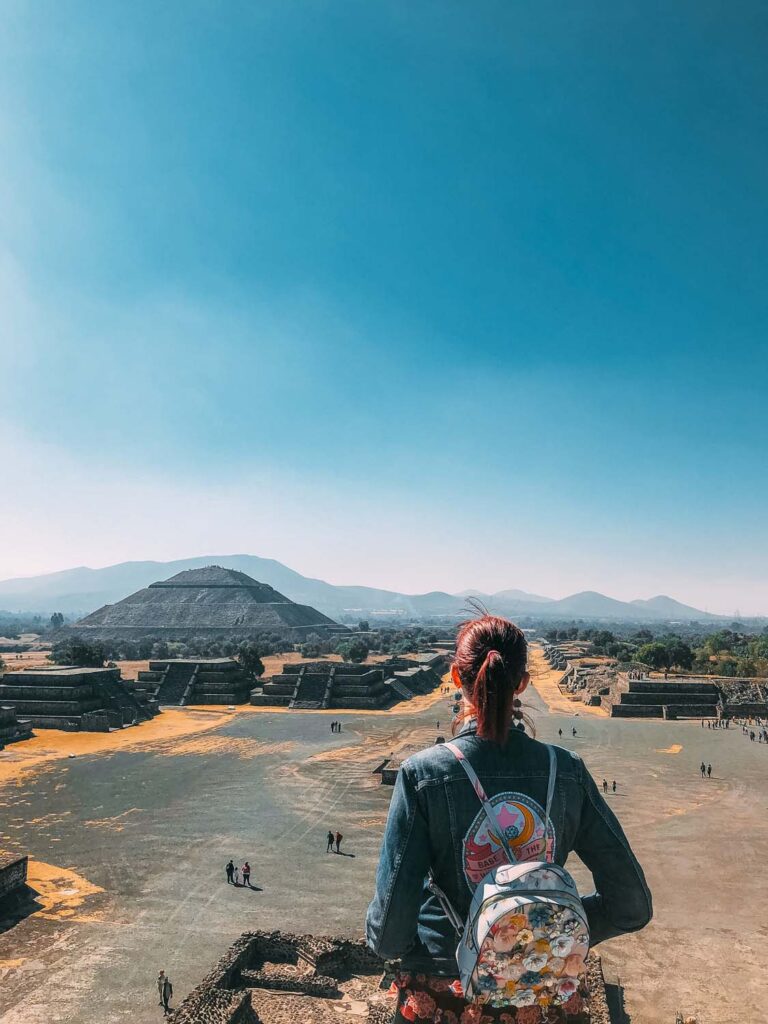
Mexican historical sites like Chichén Itzá and Tulum are much more expensive to visit. In addition to this, they feel more like a tourist-created destination, whereas Teotihuacán feels more laid bare and more natural. And as such, you truly feel like an explorer when visiting this place. But with this lack of curation comes a lack of information when you’re alone. Hopefully, this in-depth blog post provides a great introduction and guide through this incredible place.
- What's in a Name?
- How to Visit Teotihuacán
- Hours, Admission & Visitor Tips
- History
- Architecture
- Religious Iconography
- La Ciudadela
- The Temple of the Feathered Serpent
- Avenue of the Dead
- Pyramid of the Sun
- Museo de la Cultura Teotihuacana
- The Quetzalpapálotl
- Palace of the Jaguars
- Templo de Los Caracoles Emplumados
- The Pyramid of the Moon
- Museo de los Murales Teotihuacanos
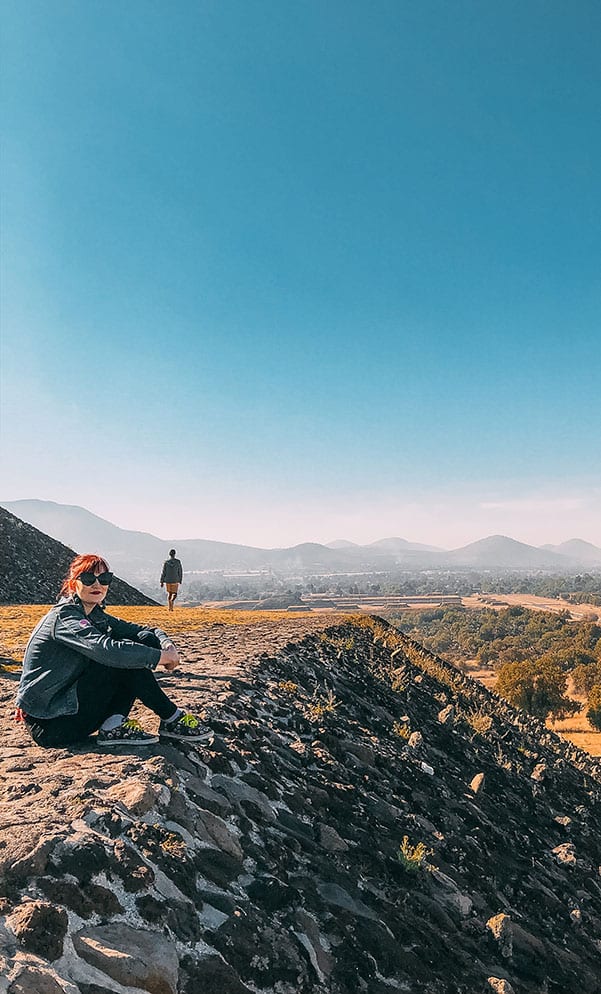
Introduction
Teotihuacán is the sight of the ancient Mesoamerican pyramids, first built in 100 BCE. That makes them over 2,000 years old! Teotihuacán was, at the time of its construction, the largest city in pre-Columbian North America, with a population of around 125,000. Considering how long ago that was, a city that size is just staggering.
Most cities that existed that long ago were so much smaller since their infrastructure couldn’t support a population of that size. 13th century London was only 80,000 people, and that was hundreds of years after the building of Teotihuacán. When you explore the site and look around at the city’s ancient foundations, you’ll be able to see the scale and size of this magnificent domain. The city continued to flourish and grow until 1150 CE, when it was destroyed by invading Mexican armies. They left it to ruin, and it was left almost untouched for hundreds and hundreds of years.
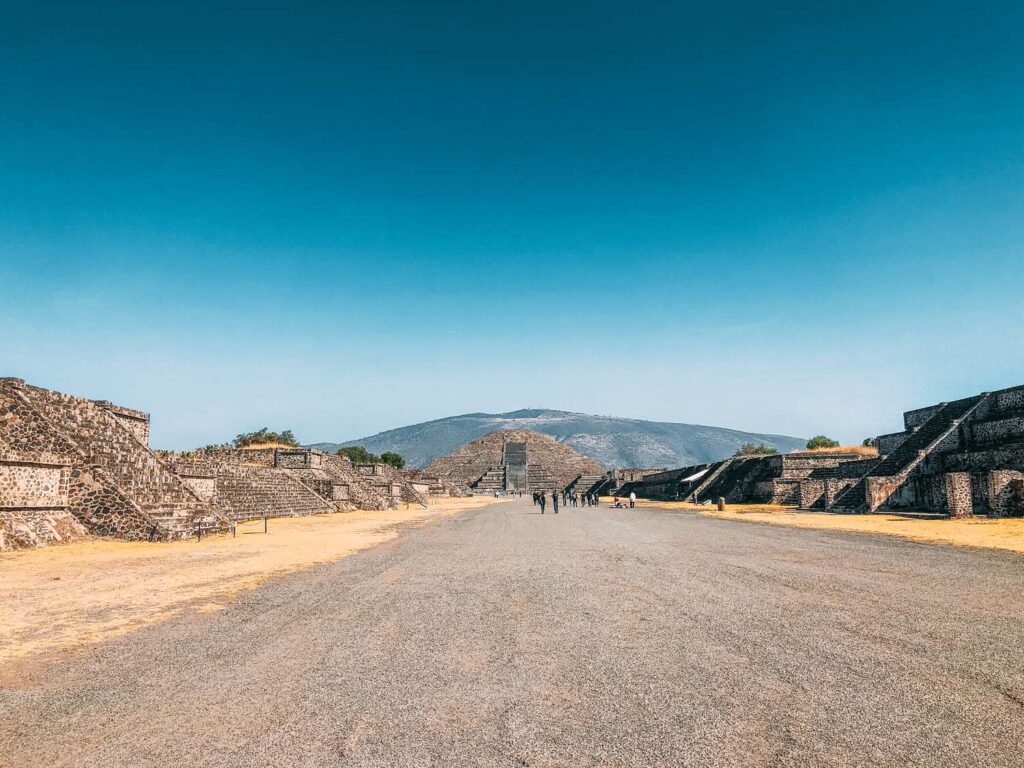
What’s in a Name?
The name Teōtīhuacān, the name given to the site, was more than likely not the settlement’s original name. Teōtīhuacān was given by the Nahuatl-speaking Aztecs centuries after the city’s fall. The name means the birthplace of the gods. The Aztecs believed and wrote in their myths that this location was where the gods created the universe. As such, when visiting, consider this a very sacred site for the Mexican people. And you should consider this while you are there. Walking down that huge avenue when you first entered the site, I felt a huge wave of awe wash over my body. It felt undeniably sacred. And even when there were moments of quiet when the tourists would scatter, I swear it still felt like eyes were watching, perhaps from another astral plane above.
Further investigations years later revealed old Mayan hieroglyphics, which referred to these areas as “puh,” which means the “Place of Reeds.” Since this name and the hieroglyphics would not have been discovered by the Aztecs during the Mayan period, they most likely didn’t rename the site but, more understandably, just weren’t aware of the fact it ever had a different name before. Even though more and more historians are starting to identify the site by this original name, Teotihuacán has stuck thus far and therefore is what most people still call it to this day.
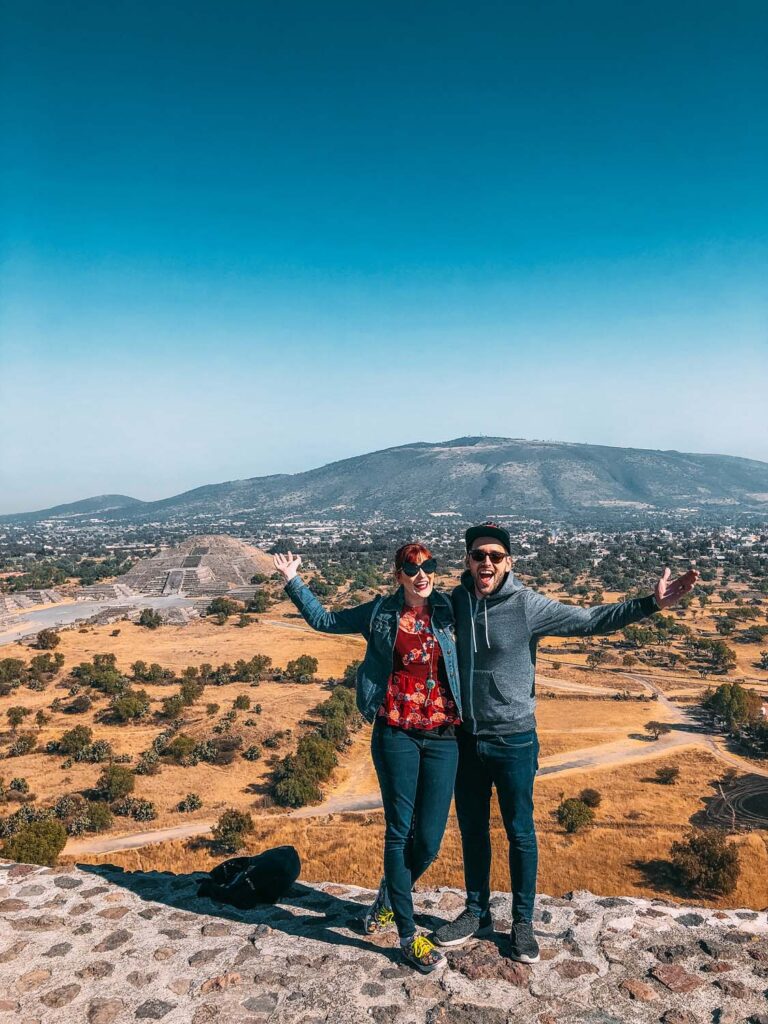
How to Visit Teotihuacán
Public Transport
You might be surprised to hear that you can access this amazing historical site by public transport! Take the Metro on Line 5 to Autobuses del Norte metro station. From there, head across the street to the bus station, where you can board a bus to the Pyramids. All the buses heading to the Pyramids are run by the Autobuses Teotihuacán company, and to purchase a ticket for the bus, head over to counter number 8.
The Public Bus
Busses leave every 20 minutes, starting around 6 am and ending around 2 pm (but never leave it that late). I’d recommend getting there as early as possible but to avoid travelling on the metro during rush hour. The buses leaving for the pyramids will have a sign which displays “Piramides” on the front of the bus. You will even get a seat number marked on your ticket, so sit where you’re assigned. Your ticket is for a specific time, so don’t miss your bus and think you can jump on the next. The journey to the Pyramids takes about an hour, depending on the traffic.
Buses will drop you off at Puerta 1 at Teotihuacán, where you can buy entrance tickets. I’d give yourself at least 4 hours to explore, so check the bus return departure times. The buses returning to the city can be found at Puerta/Gate #2 near the main road or Gate #3. So, if you’re brave enough, the journey on public transport is well worth the effort for the cost savings! Public transport costs only 100 pesos (around $6 USD) for a round-trip journey from the bus station to Teotihuacán and back. Tickets on the Metro cost 5 pesos (less than 25 cents USD) per journey.
Why do I say brave? Well, Mexico City’s public transport system has a very sketchy reputation. Some people say it’s totally safe, and others would avoid it at all costs. If you’ve travelled a lot on the metro before and are a confident traveller, I would say this journey would be fine for you. But I would skip this option if you’re a newer traveller or visiting Mexico City for the first time.
Guided Tour
There are dozens of different guided tour options for your visit to Teotihuacán. Whichever company you go with, the biggest thing you want to make sure of is an early morning departure and that you have plenty of time at the site. These things will make a huge difference in your experience. While a large group size is something I try to avoid, this blog post lets you easily get away with being your own tour guide. But having a real one to answer all your burning questions is always nice.
Vibe Adventures offers a completely private guided tour. Their prices depend on your group size, but for two people, it’s $172.00 USD. Amigo Tours offers an amazing sunrise option as it allows you to see the site without all the tourists as the sun comes up behind the pyramids. For two people, the 9-hour tour costs $67 USD. They bring larger groups to the site, which is a downside, but you get the cost savings.
Airbnb Experiences
We went with an Airbnb experience called the Teotihuacán Express. We LOVED it, not only because it left early in the morning but also because the group size was very small. There were only four guests on the tour, of a possible six. This ensured I could ask all my questions! We also had plenty of time to explore the sites independently, a great balance to a guided tour. The tour costs $65 USD per person, which is the best option!
Private Driver
Hiring a private driver is another great way to get safely to the historic site. This way, you can explore the entirety of the place on your own time. Ask your hotel about hiring a private driver, as they almost always have a few reliable drivers for you to contact. If you’re not staying in a hotel, I’ve also found Airbnb hosts to be very useful in recommending their own private drivers. You can also use Uber to get to the historical site, and so long as you’re travelling during popular times of the day, you shouldn’t have an issue getting back to the city. Just remember that the prices of the rides tend to be more expensive on the return journey since traffic increases throughout the day.
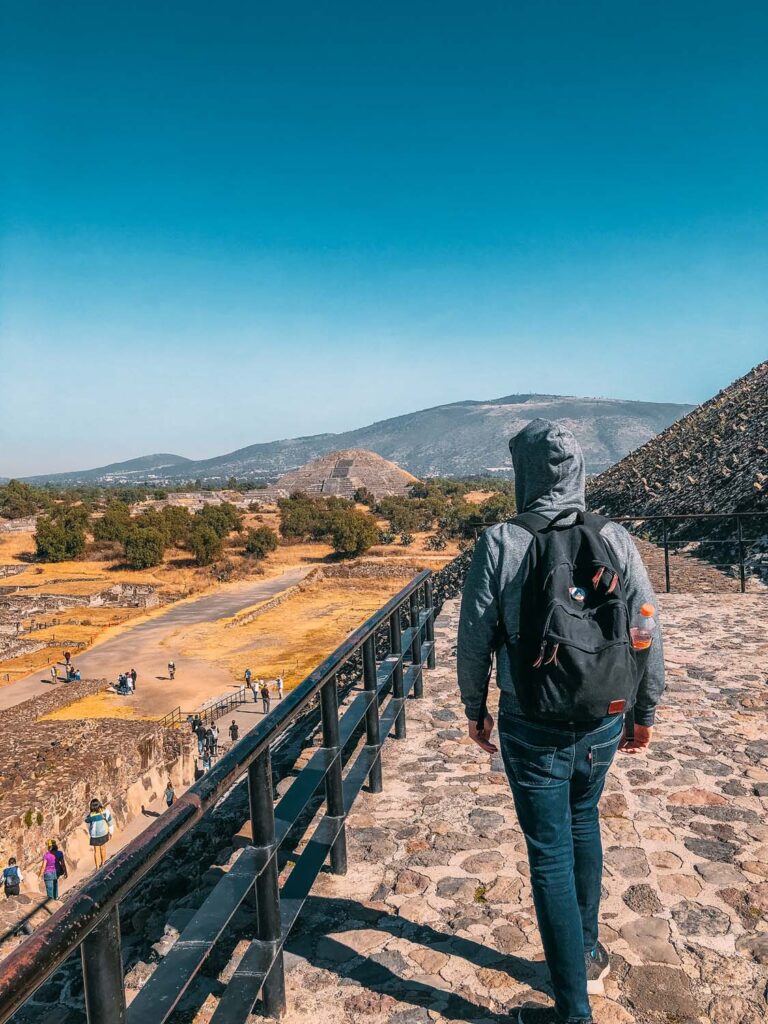
Hours, Admission & Visitor Tips
If you’re travelling to Teotihuacán by guided tour, all your admission fees should be paid, but if you’re going alone, you’ll be responsible for getting your own admission tickets. The Teotihuacán archaeological zone is open daily from 9 am to 5 pm, Monday to Sunday. Admission costs 70 pesos per person, and children under one can get in.
How Long to spend?
I would say 4-5 hours is enough time to see everything. Some people blast through the place at lightning speed, which is an option, but there is SO MUCH to see and do! It would be a shame to come all this way and miss out on so much. So don’t rush, and just take it all in as it comes.
When to Go?
Weekday mornings are, no doubt, the best time to visit. This site can get very busy on the weekends (especially on Sundays when the entrance is free to locals.) Arriving early in the morning will not only mean fewer people, but it also is much, much less hot. This area of Mexico is almost entirely shadeless, and the hot sun will just be beating down on you all day. So arriving as early as possible ensures your visit will be all the more comfortable.
What to Bring
- WATER! And lots of it. Remember what I said about the sun? And remember, this area of Mexico is much higher, so you’ll find yourself becoming dehydrated more quickly. You can easily think you’re drinking enough and still suffer from heat exhaustion the next day. Drink more than you think you should, and you’ll be fine.
- Cash for the vendors. At the site, there are some really sweet artisans and craftspeople. There is even a small marketplace. I loved the Jaguar souvenirs we bought from here to remember the trip, and it would be a shame if you didn’t have cash on hand, as none of these places take credit cards. Also, if you’re hiring a guide or driver, giving them a cash tip is nice as it goes straight to them instead of to the company.
- Snacks! If your tour doesn’t include food, you’ll want to pack something to eat. Our tour provided lunch, but as it was a 9-hour tour, we were glad we brought some snacks to enjoy. Just be sure to pick up after yourself!
- Walking shoes. A lot of walking is required to explore all of Teotihuacán, so bring comfy shoes that aren’t open-toed. While sandals might seem like the coolest option for a hot day, the gravel, sand, stairs and rocks don’t make for a great combination when paired with open-toed sandals.
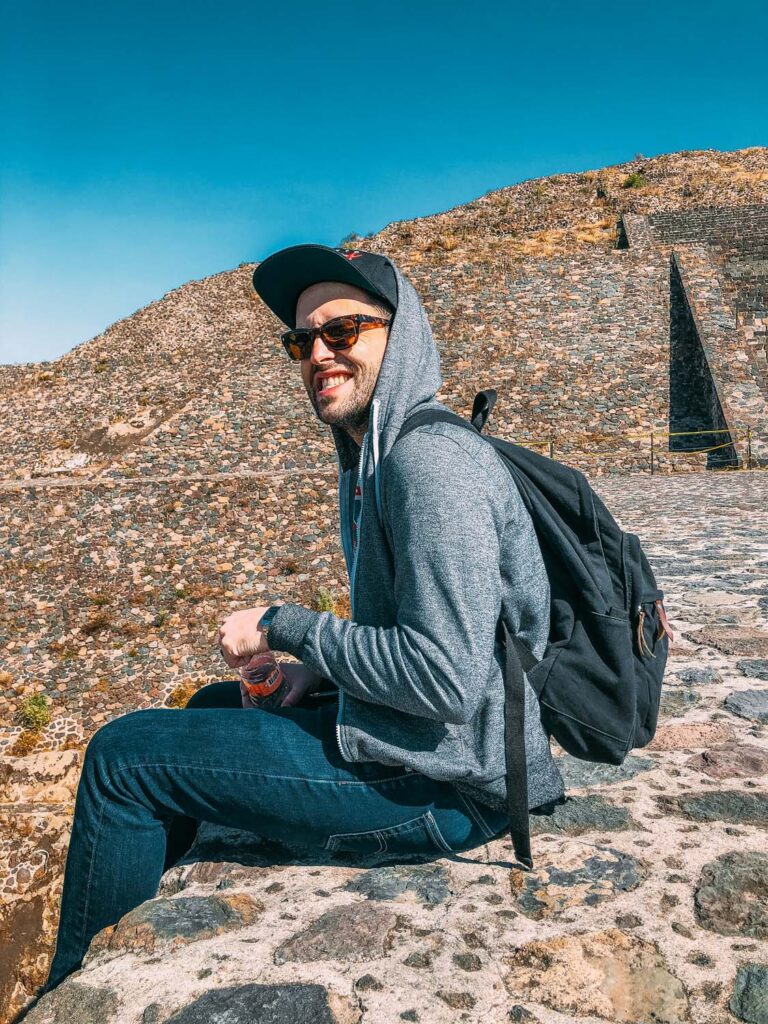
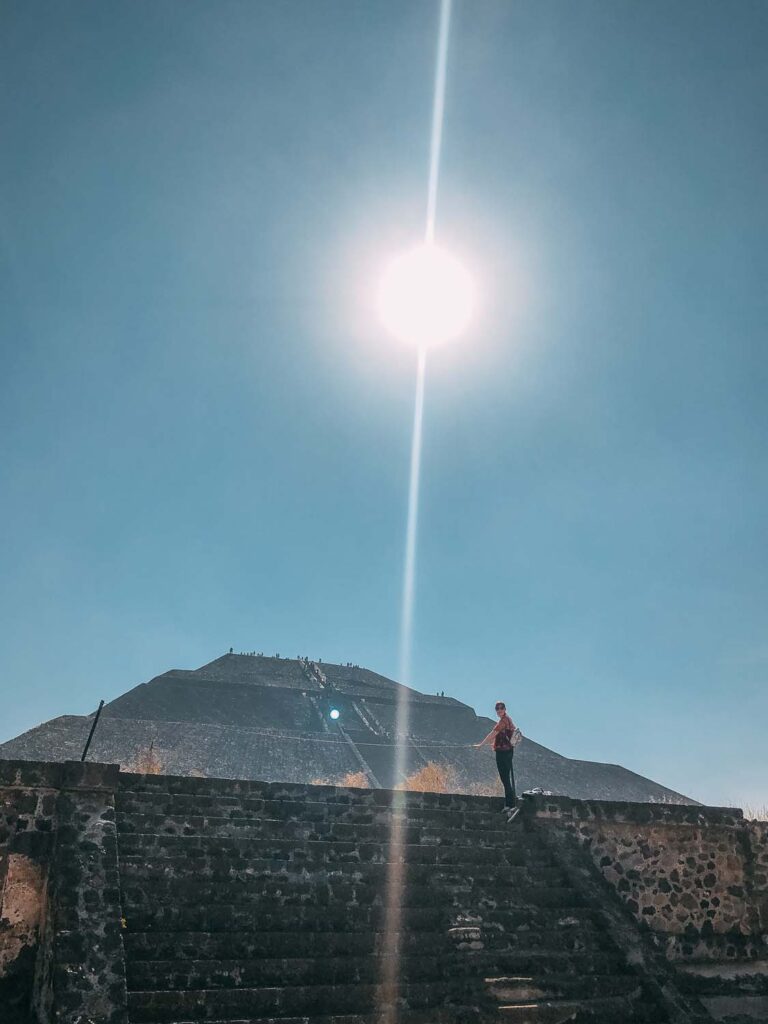
Accessibility
If you have mobility issues or can get tired easily, it’s best to go on a guided bus tour, as the tours will actually drive you from site to site, so you don’t have to walk almost 4 km between all the different buildings. Although you might want to skip the climb up the pyramids, there is still lots to see on the ground, and you’ll have more time to grill your guide with questions about the beautiful site. If you only have the energy to climb one of the pyramids, I’d recommend the Pyramid of the Moon. It is a much shorter climb, and I liked the view from up there the best. But the climb is quite steep, so keep that in mind.
Wheelchair Access
If you’re visiting in a wheelchair, I managed to find a wheelchair-accessible tour for you! There must be more of these since tracking even this one down was challenging. I hope you’re listening tour operators! Gate #5 is the best entrance for wheelchairs as this entryway has no steps or obstacles to enter the Teotihuacan complex. The terrain along the Avenue of the Dead is fairly level, but as it’s made of old dirt and gravel, it is much more easily traversable in a powered chair rather than a manual. But if you’ve got the energy or the help, don’t let this hold you back from visiting this great site; it might require a little more effort.
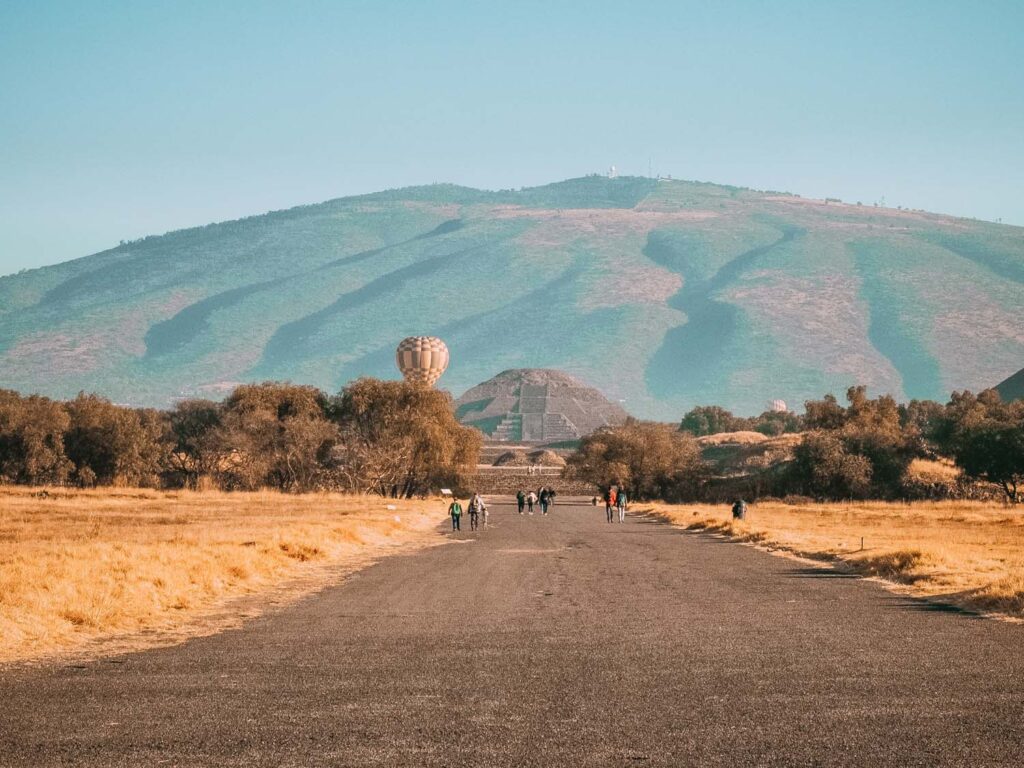
History
The history of Teotihuacán is very mysterious, as archeologists and historians still do not know exactly who built this amazing sight. No non-ideographic texts (hieroglyphics) from Teotihuacán exist, meaning there is no recorded history of their culture. At first, historians thought the city was built by the Toltec civilization, one of Mesoamerica’s first recorded civilizations. But these people didn’t appear until 900 CE, and Teotihuacán predates this culture by a few hundred years.
The architecture of Teotihuacán appears to contain features of various cultures, including the Maya, Mixtec and Zapotec. This led historians to believe that various historically evident volcanic eruptions from the nearby Teotihuacán Valley, just before the founding of the city, would have brought thousands of different people from various tribes together into this rich basin. And this was where they formed the new city of Teotihuacán.
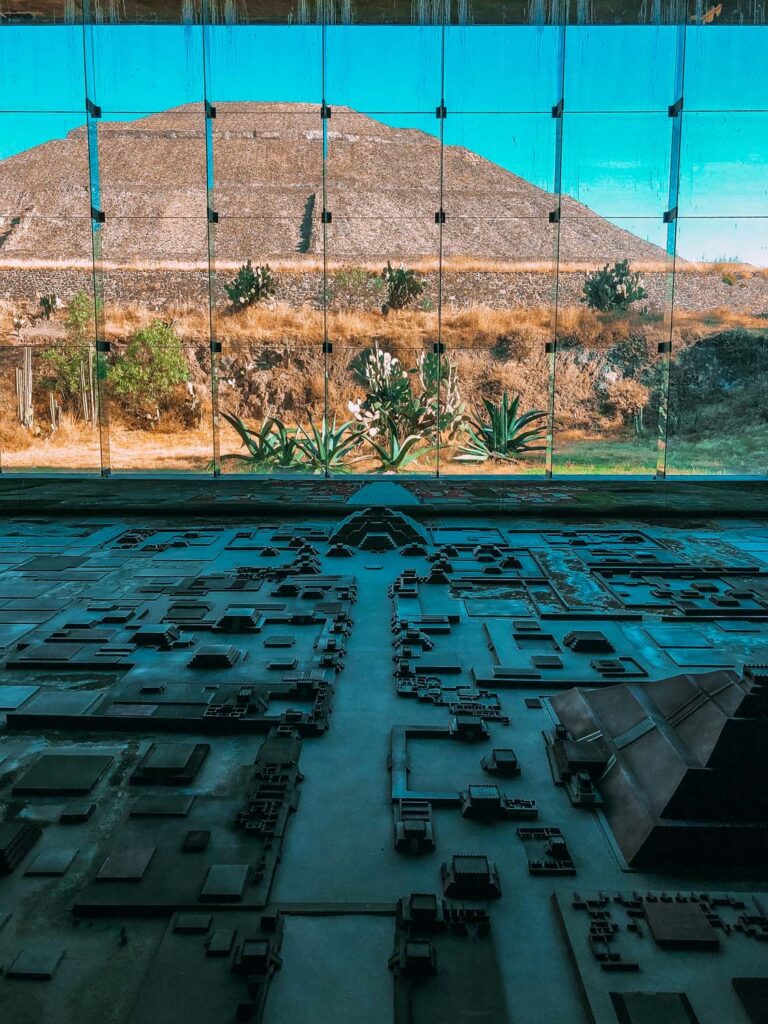
Chinampas
The basin was rich with minerals, and agriculturally, Teotihuacán was equally prosperous. Teotihuacán employed chinampas that created channels of irrigation that funnelled water into more arid areas of the land. This allowed farmers to create large, plentiful fields throughout the valley. The farmers of Teotihuacán grew everything from corn, beans, squash, tomato, amaranth, avocado, prickly pear cactus, and chilli peppers.
These chinampas canals also provided a means of transportation. They used canoes to travel up and down the valley. Access to the waterways also meant they could easily trade with cities around Mesoamerica. In many of the dig sites around Teotihuacán, they have found objects from as far away as Guatemala! Historians could see how far and wide people would travel to visit this great city through these discoveries.
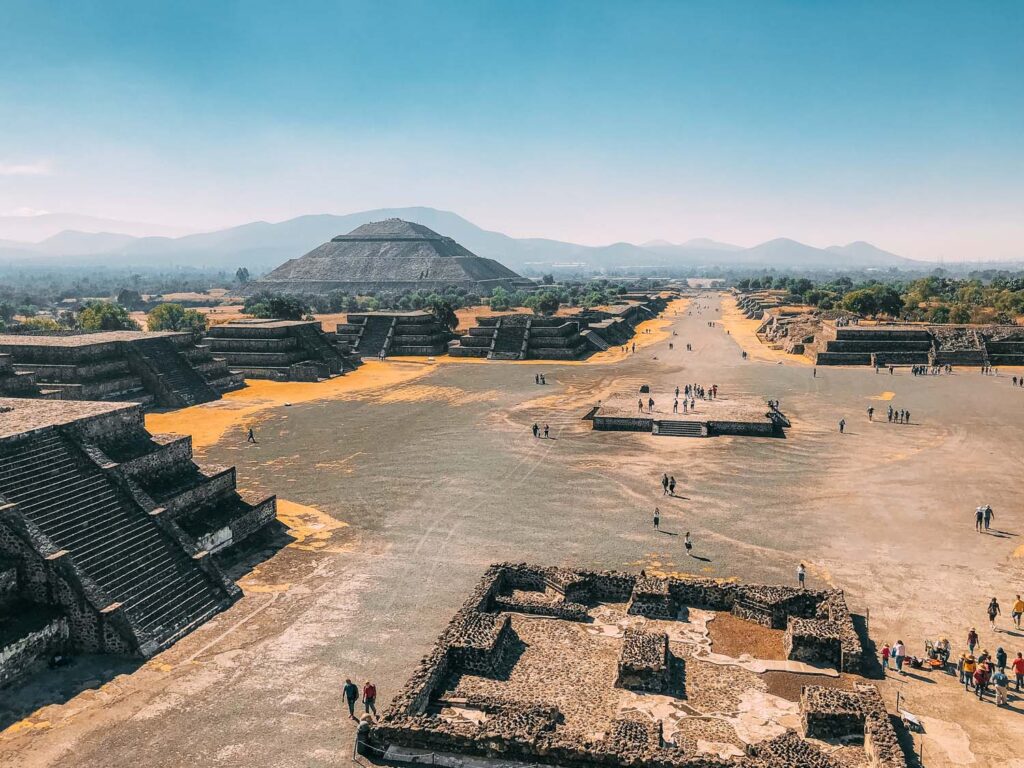
Archeological Discoveries
Another thing which they have uncovered is that Teotihuacán was a city of craftsmen. Discovered in ruins were thousands of pieces of pottery and jewellery, along with the tools which would have been employed by these artisans. But their most precious crafted material was obsidian! Large obsidian deposits were located nearby at Pachuca, and this mineral was used to create strong pieces of weaponry, such as spears and dart heads.
Although no military structures have been found in Teotihuacán, this does not mean they were a peaceful nation. In various murals that have been uncovered, there are depictions of fearsome warriors and impressive arms. Their military leaders wore impressive feathered headdresses, carried large shields and shells were used as makeshift armour. Hundreds of weapons have been found on-site, perhaps evidence that Teotihuacán was one of the largest weapons traders in Mesoamerica. Perhaps this is what led to their downfall as a tribe? Trying to guess what brought an end to this illustrious city is truly one of the most interesting parts of visiting Teotihuacán.
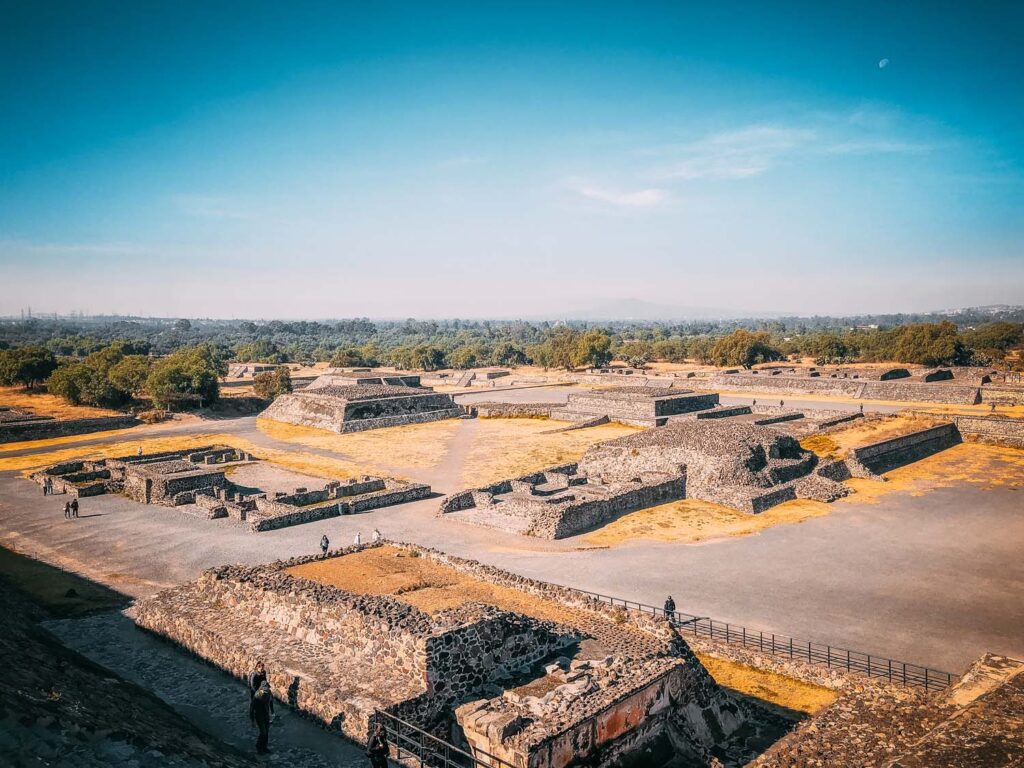
Architecture
The architecture used to create these buildings is incredibly ingenious, considering their design time. The pyramids closely resemble other structures from as far away as Egypt, despite having no connection to that far-off land. The main style found at Teotihuacán is “talud-tablero,” which refers to the architectural feature of inward-sloping external sides, which are topped with a rectangular panel. Originally these buildings would have been painted dark red, almost burgundy, and decorated with emerald greens and other natural colours that would have been derived from organic materials found around Teotihuacán.
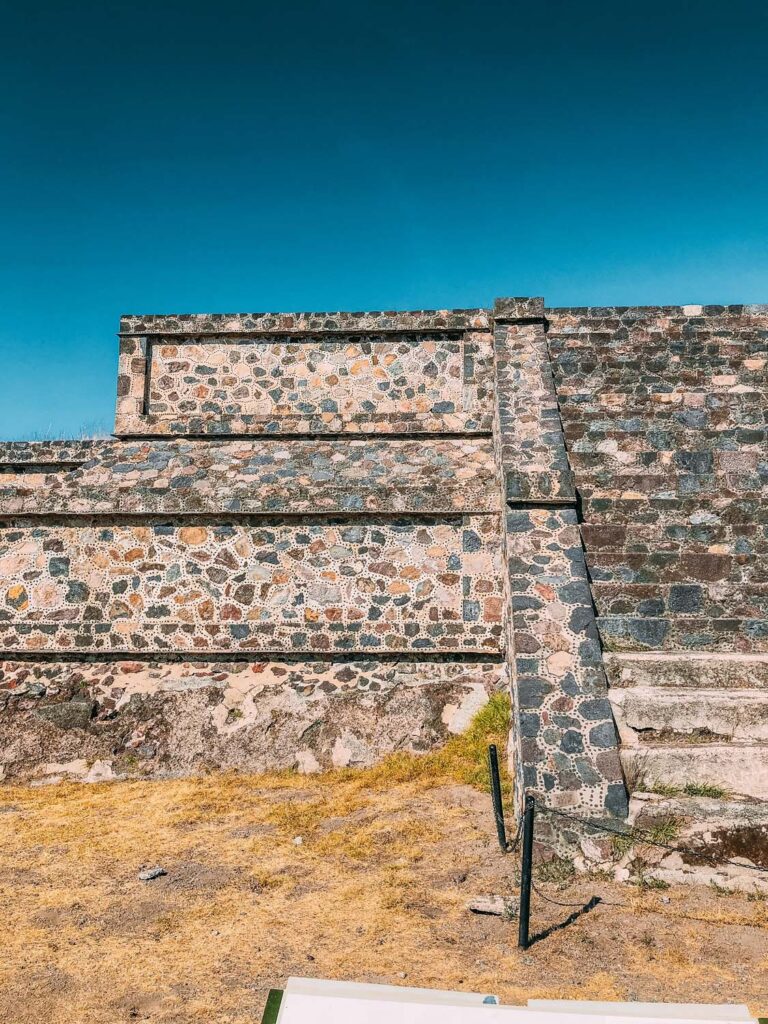
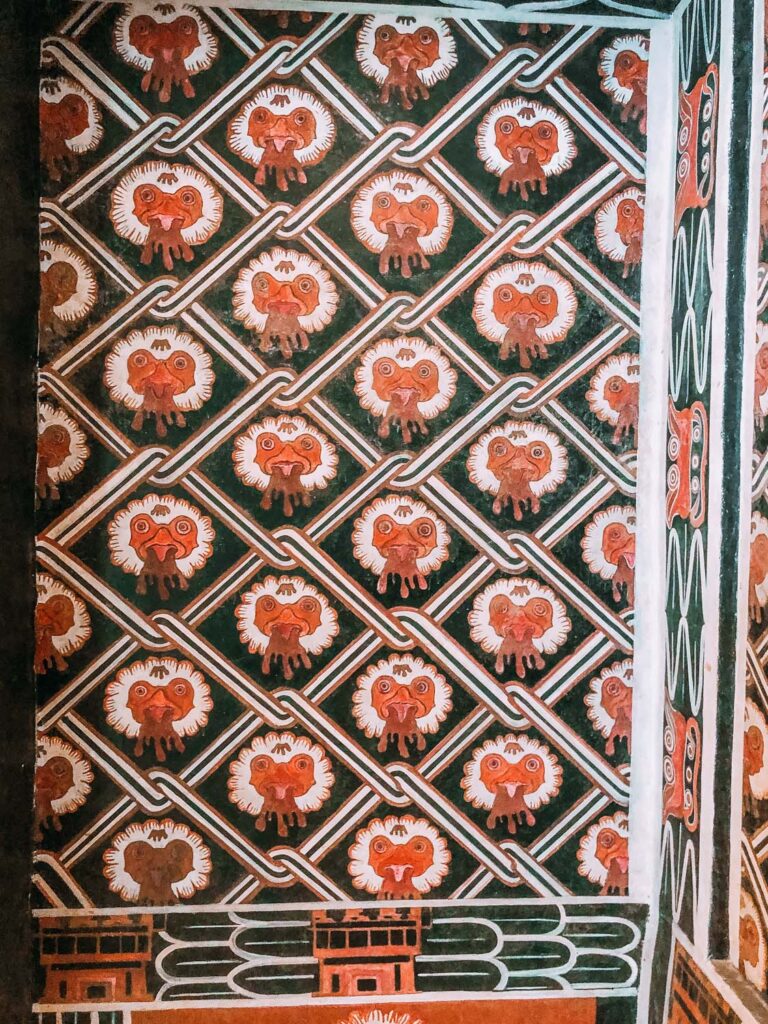

Religious Iconography
Gods were of the utmost importance to the people of Teotihuacán. But their gods were very different from the ones we know today, but that makes them no less significant. Knowing a little about these gods is important, as it helps you better understand some of the iconography used throughout the archeological sites. Just as knowing a few stories from the Bible helps you interpret images in Christian Cathedrals, knowing a bit about these Mexican gods helps you better understand the stories they are trying to tell, even thousands of years ago. Despite no written texts about the gods from Teotihuacán, hieroglyphics which tell their stories have been discovered. Teotihuacán gods share some of the same characteristics found in the Aztec culture, of which we have much-written text that gives us a bit of insight into their history.
Great Goddess of Teotihuacán
The Great Goddess of Teotihuacán is the chief god that rules over the city. The great goddess is most notable for her giant feathered headdress, which is almost twice as wide as herself. In the headdress’s center is an owl’s face with a pointed beak. Her body is adorned with large beaded necklaces and other jewelry pieces typically worn by Teotihuacán women of the time. The most important piece of jewellery on her body is the enormous jade nosepiece, decorated with what looks to be spider-like fangs. One of the remaining sculptures to her glory still sits outside the gates of Teotihuacán after you pass through the admission gates.
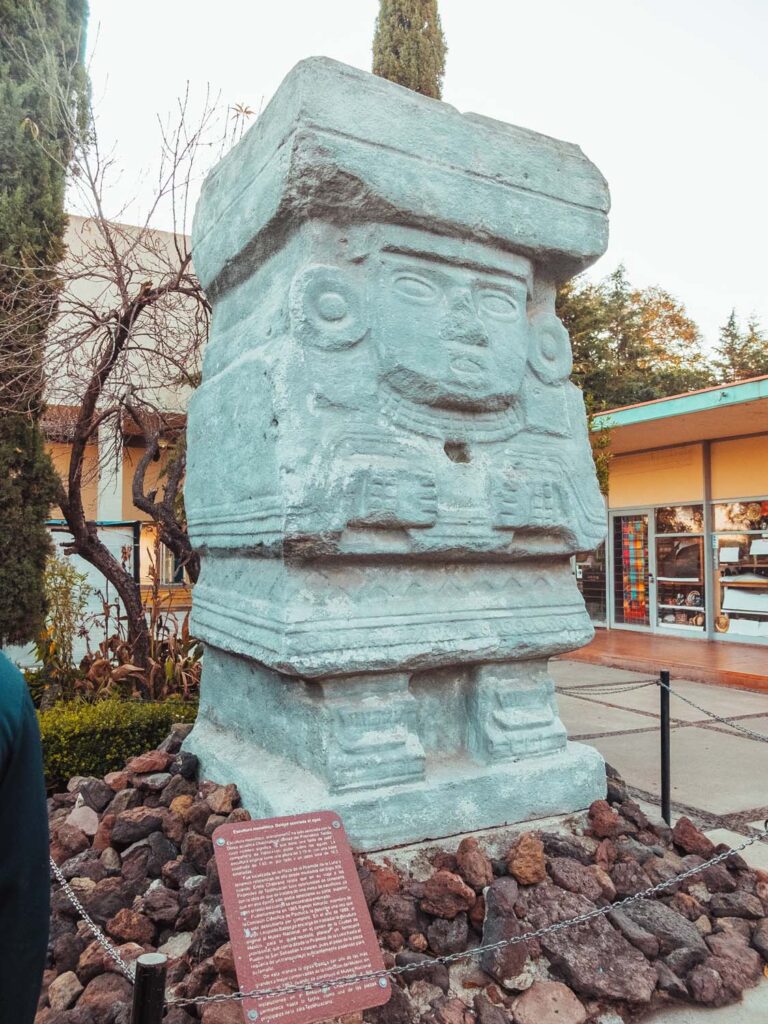
One of the most important murals which depict the Great Goddess of Teotihuacán was found in the Temple of the Jaguar. This is significant as the goddess is considered one of the underworld’s rulers. Throughout representations of the Great Goddess of Teotihuacán, you’ll find images of spiders, owls and jaguars. Each of these animals is known to be associated with the night and, therein, the underworld. But in addition to symbolizing the underworld, she also directly represents creation. Many murals depict her with her hands outstretched, with water or jewels pouring from them. This represents how she is there to provide for her people.
Quetzalcoatl, the feathered Serpent
Quetzalcoatl, after whom one of the temples in Teotihuacán is named, is the feathered rattlesnake god. He usually wears a breastplate made of a large conch shell on his chest, which has been known to be worn as a talisman by spiritual healers and religious rulers all over Mesoamerica. The conch shell, which sounds like the wind when pressed to your ear, is significant as Quetzalcoatl is the god of wind, air, and learning. The shape of the conch shell is also thought to replicate the patterns created by hurricanes, dust devils and tornadoes which might have torn through this part of the countryside. While in some other Aztec cultures, the feathered serpent represented war, in Teotihuacán, historians have found that he is more closely associated with fertility and the earth’s agriculture.
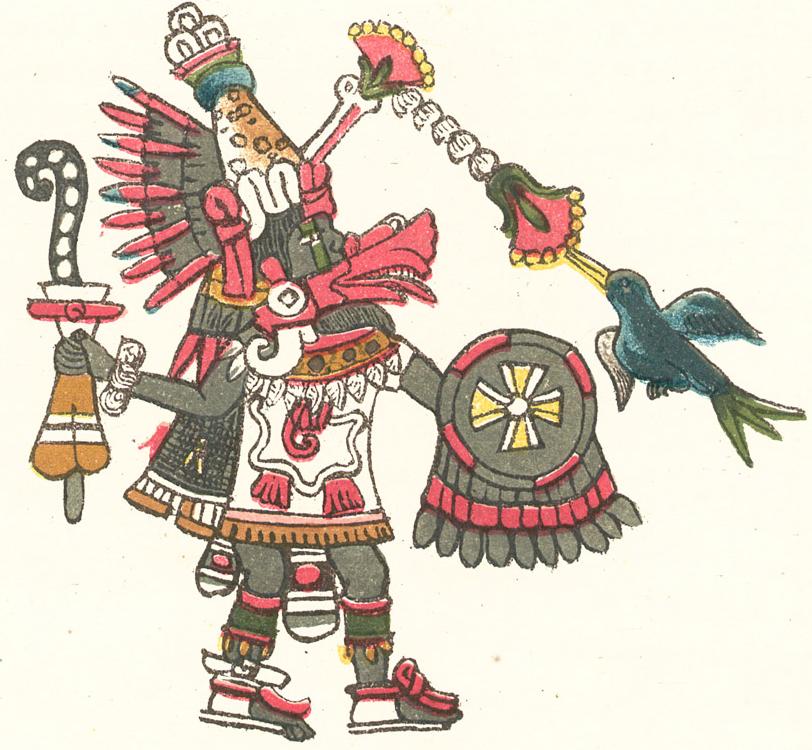
Tlaloc, the Storm God
Tlaloc was the storm god, the god of rain and fertility. In these arid climates, water was so closely associated with life and, therefore, power. As such, Tlaloc was one of the most important gods in their pantheon. Tlaloc is usually depicted with large, bug eyes and fangs (often made from panther claws). Tlaloc is also almost always seen carrying a cornstalk or lightning bolt wand.
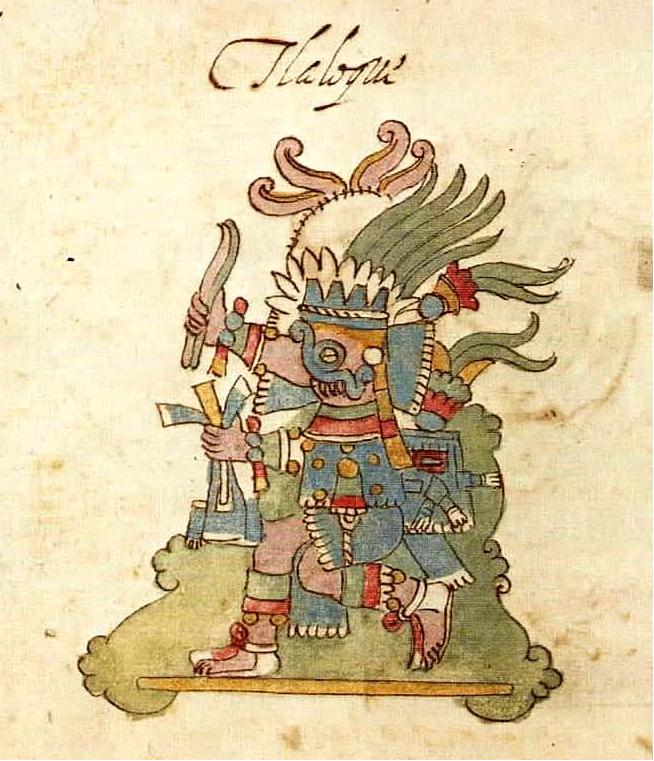
La Ciudadela
When arriving at the site, the first large, almost empty field you’ll encounter is the great Ciudadelal or “marketplace” of Teotihuacán. Surrounding the central Ciudadela are a few other large and wide structures which encircle an enormous large inner courtyard. These outer buildings would once have had tall walls, which protected the inner area of the Ciudadela.
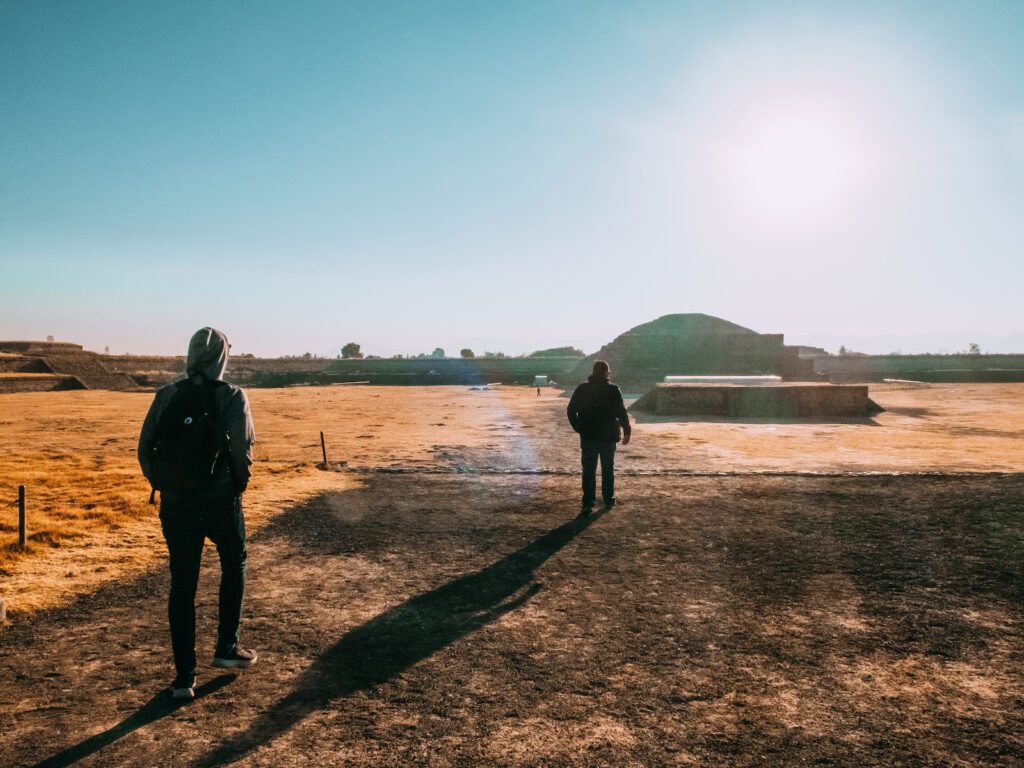
In the center of the field, inside this walled area, are two large foundations, once the location of two huge mansions. These were thought to be occupied by some of the most powerful families in Teotihuacán. These families would have wielded great political power and influence over the city. Having their house in the centre of the Ciudadela would have allowed them to watch over the dealings and daily life of the city.
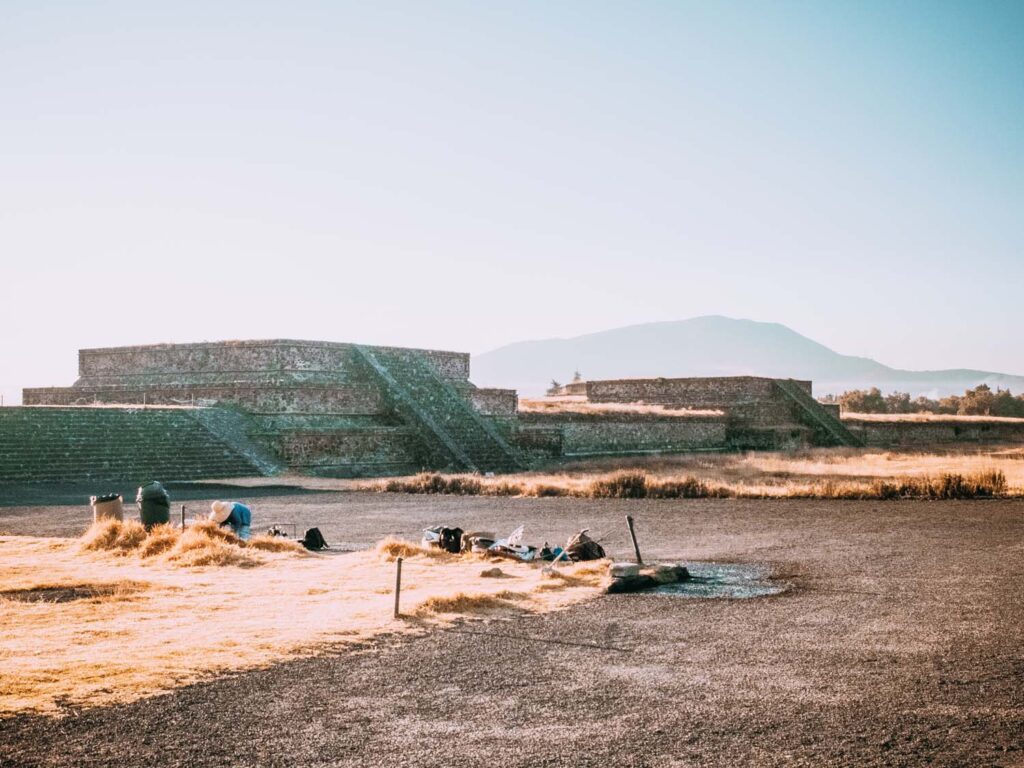
The Temple of the Feathered Serpent
The Temple of the Feathered Serpent is located towards the back of the Ciudadela. Walking up to this first pyramid, I remember feeling so in awe, but I had no idea how small this pyramid was compared to the ones along the Avenue of the Dead! This structure was built in 150 CE. Covering all sides of the pyramid are carvings of the feathered serpent, giving the pyramid its name. In addition to the faces of the feathered serpent, you can also see images of Tlaloc. See if you can spot them all! Look closely at their eyes. They all have empty sockets, which once would have contained obsidian orbs, that have since been plundered over the years. You can imagine how these orbs would have reflected the light and looked like the eyes of the gods were following you.
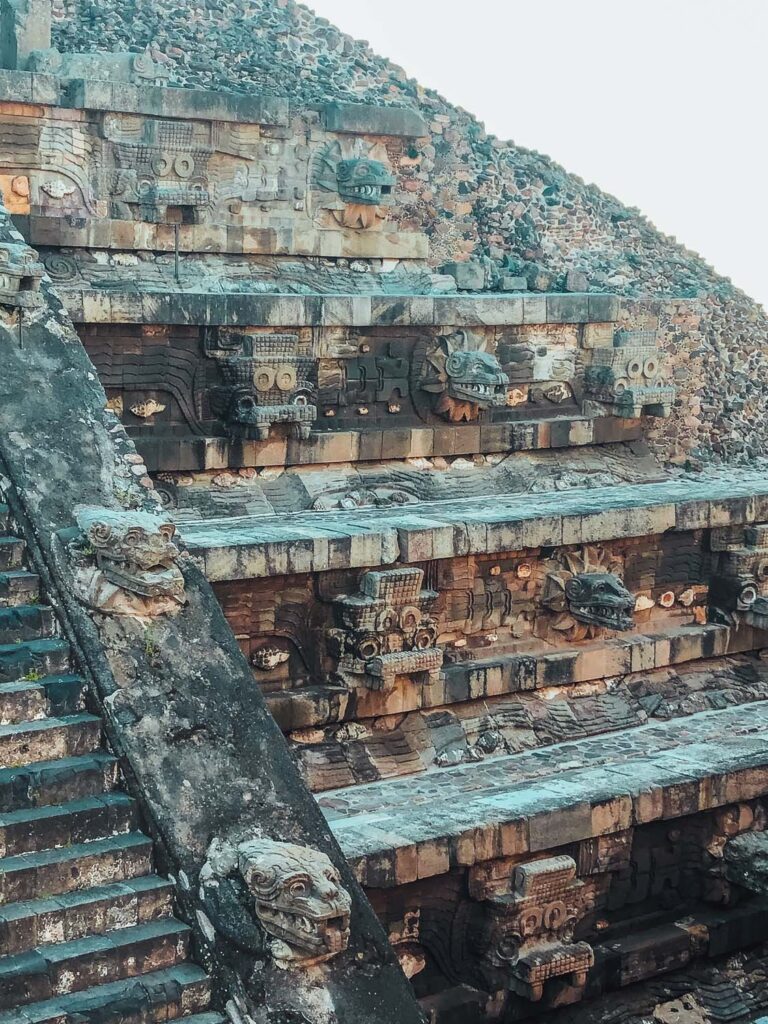
Below the sculptures of the god’s heads, you can see bas-reliefs with symbols of water and seashells. Since this location is so far away from the sea, these representations of the ocean solidify that this society knew these geographic locations. This also means that perhaps citizens of Teotihuacán either travelled out to the edges of the country or received travellers and traders from those parts of the country.
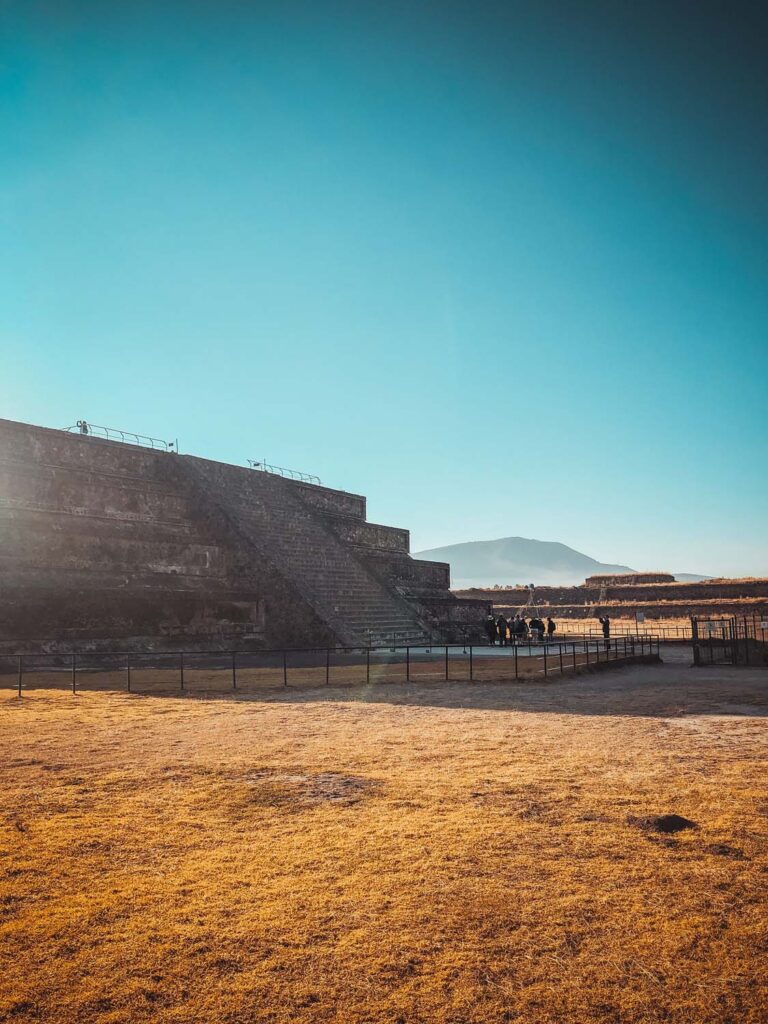
Mesoamerican Calendar
In addition to the empty eye sockets, you might notice that some of the god’s mouths are missing something. The people of Mesoamerica had a very advanced understanding of the calendar, and it is thought that these serpents’ mouths helped track the calendar year. There are 260 of them, the number of days the Teotihuacán calendar followed. They had a rich understanding of the position of the sun and the moon, and their position in the sky was of the utmost importance to their culture and architectural designs.
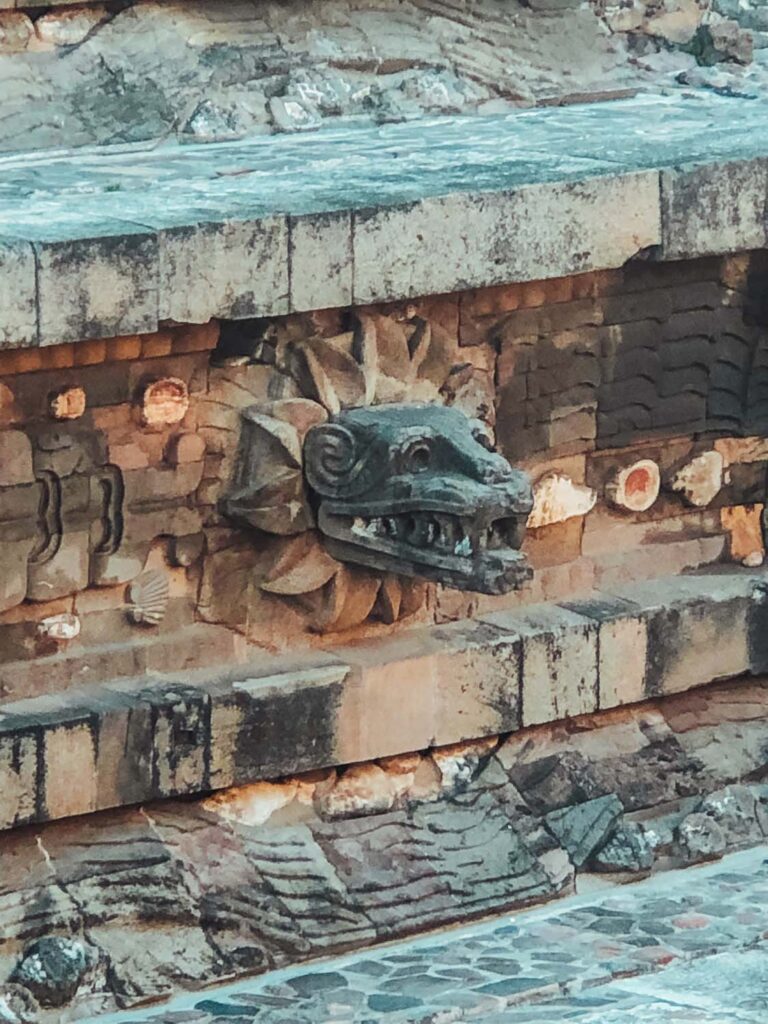
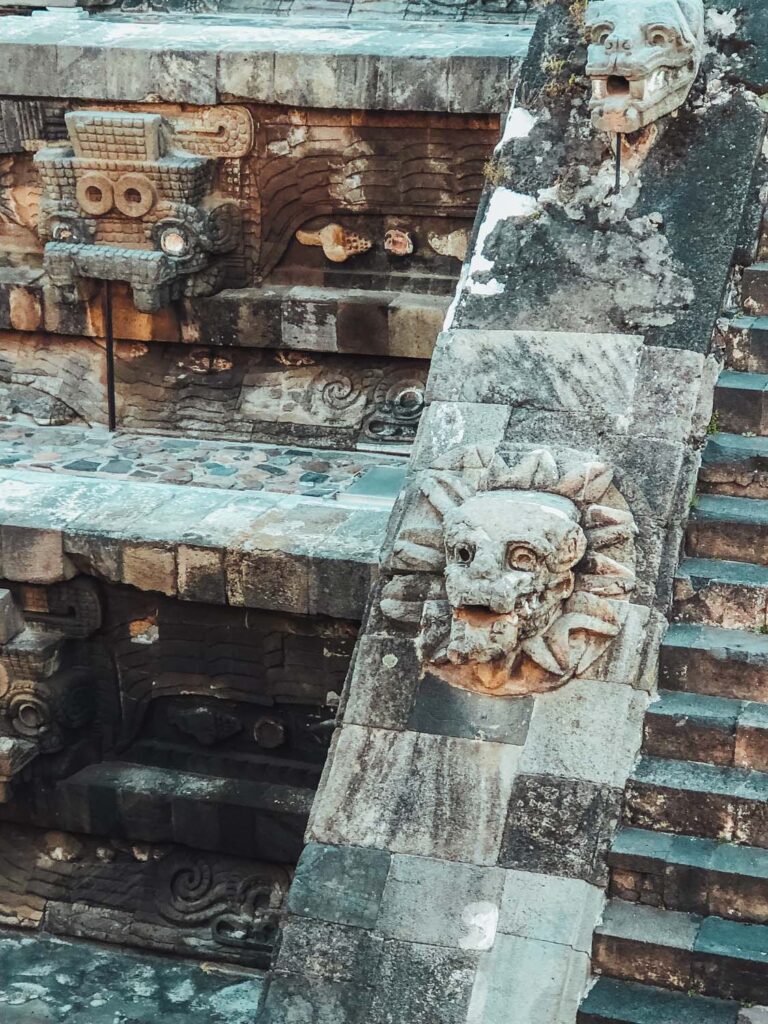
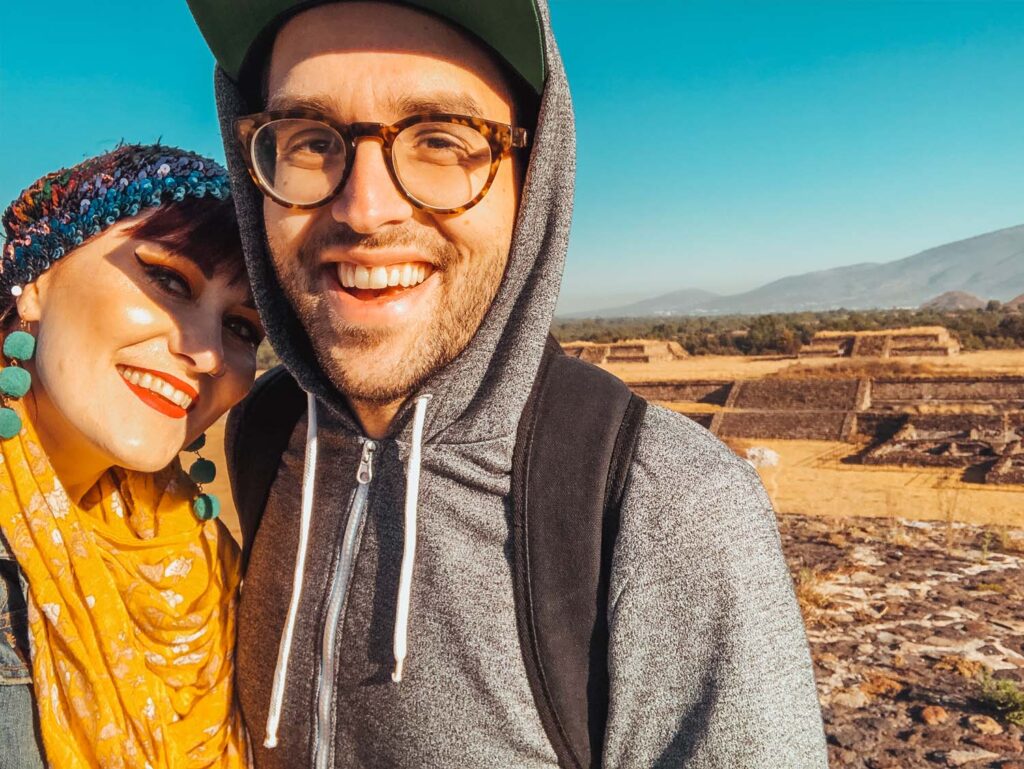
Underground Tunnels
As recently as 2003, an underground tunnel was discovered under the Temple of the Feather Serpent. After many painstaking years of digging and careful excavation, archeologists discovered a series of tunnels connecting different areas of the Teotihuacán complex. Many large entrances inside these tunnels were blocked off by huge boulders, which had been placed there 2,000 years ago. Excavating the entrances, they found seashells, cat bones, pottery and even human skin.
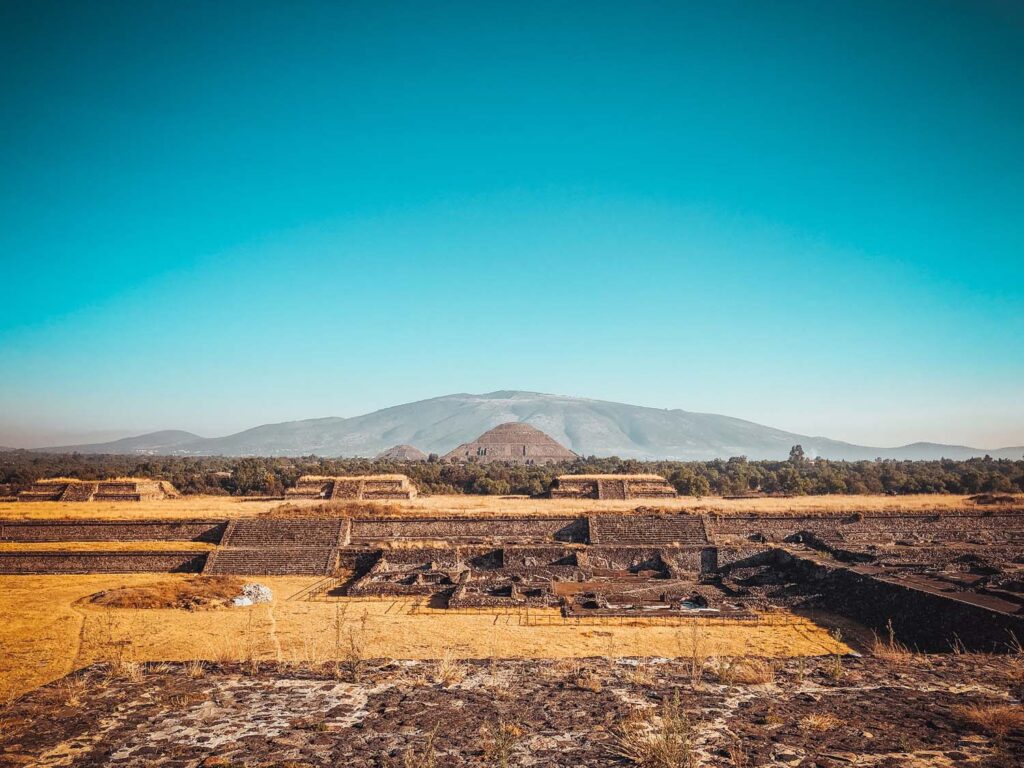
Towards the end of these tunnels, they even discovered what they believed to be a small sanctuary. Hundreds of precious objects were found, from; wooden masks covered with inlaid jade and quartz elaborate necklaces, rings, stone crocodile teeth and human figurines. There were crystals shaped into sets of eyes, beetle wings arranged in boxes, sculptures of jaguars, and hundreds of metallized spheres. Guarding the entrance to the underground area were four large stone statues. Each one wearing garments that would have once been adorned with gems. They are thought to be the founding shamans of Teotihuacán who would have greeted pilgrims into the sanctuary. Here, sacred objects used to perform rituals were also found, making it perhaps one of the most sacred remaining sites.
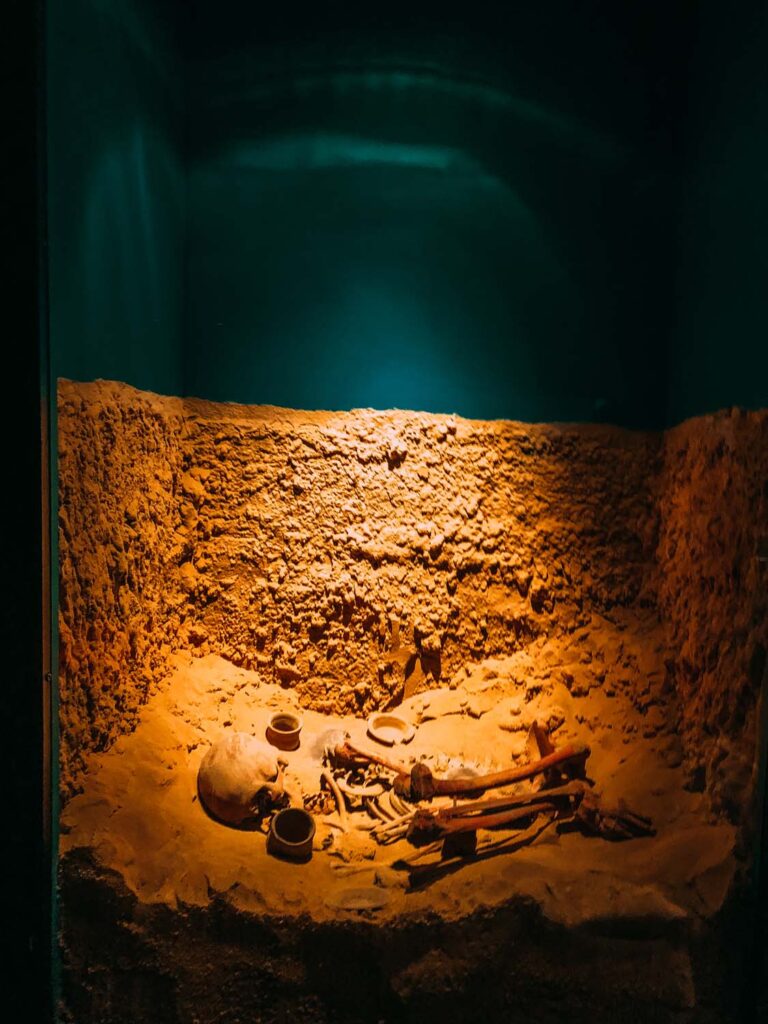
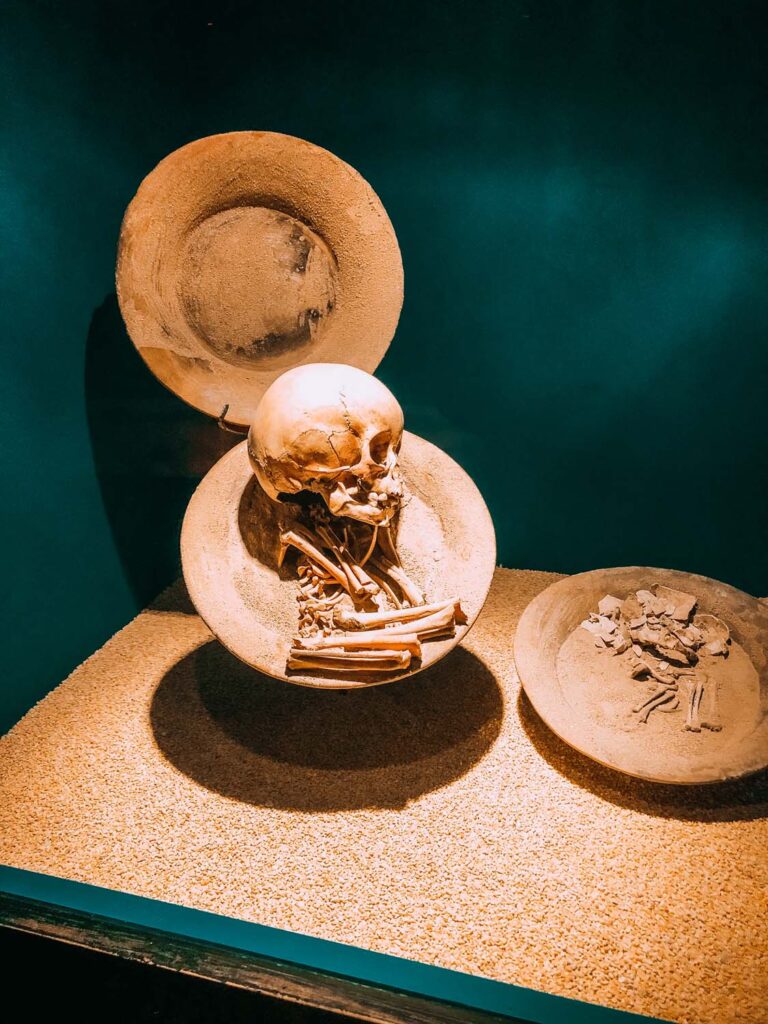
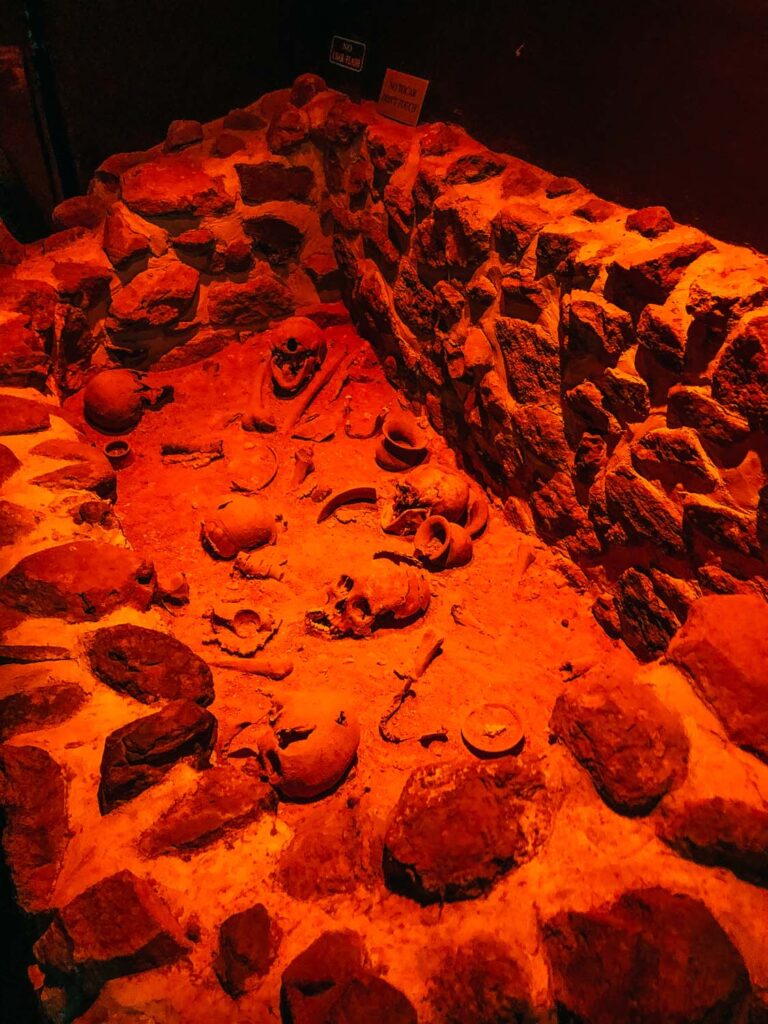
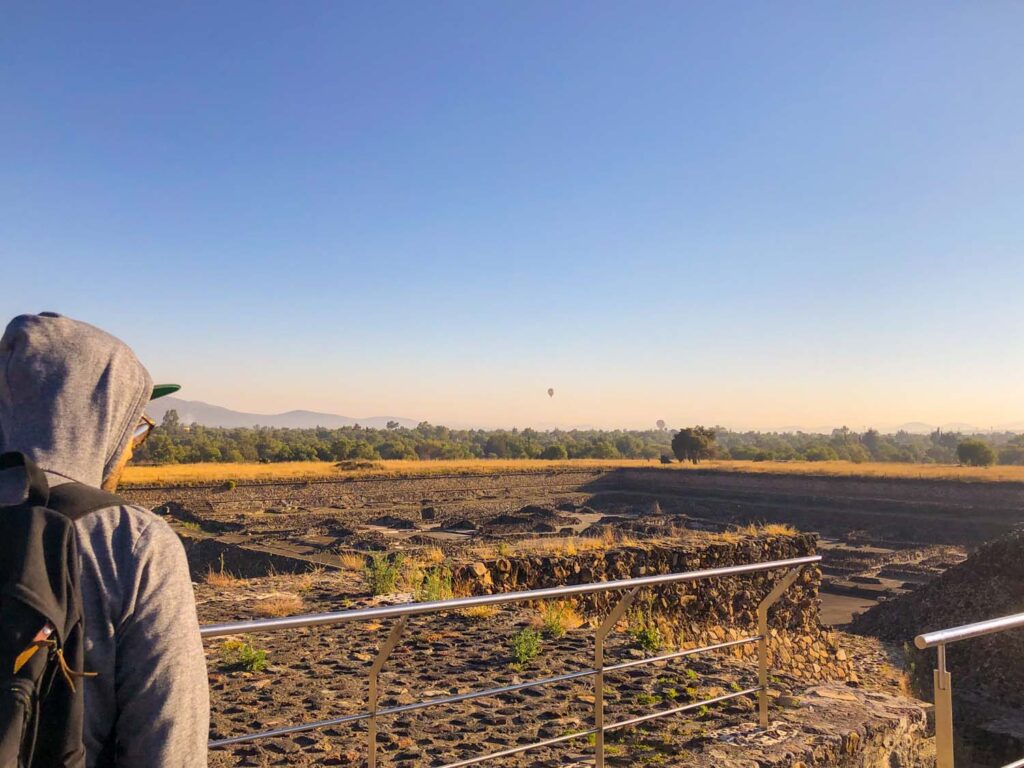
Avenue of the Dead
Head back out to the main avenue and walk towards the other end of the archeological site. This large walkway, leading directly to the Pyramid of the Moon, seen at the end of the avenue, is called Avenue of the Dead. The road is about 40 meters wide and 4km long (this is why you need your walking shoes!) The length is one thing, but the width makes this avenue seem grand and important!
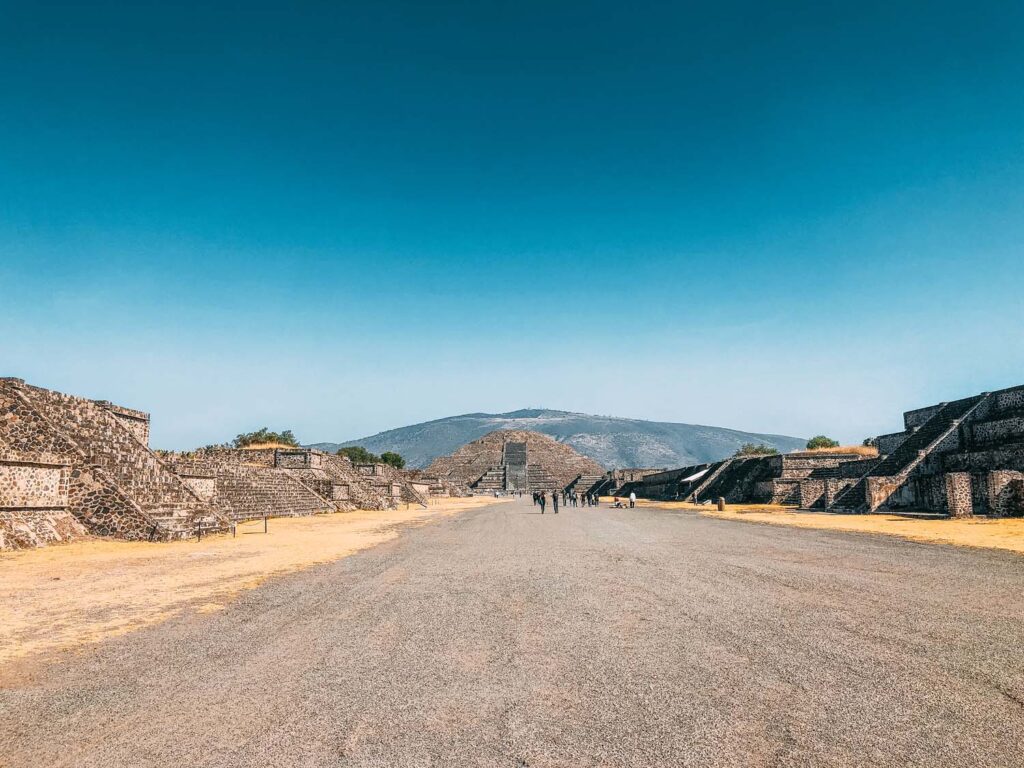
On either side of the avenue are dozen smaller buildings, with talud-tablero platforms. These are believed to once been where burial tombs were kept, giving the avenue its name. Each of these buildings would have been topped with a temple at one point.
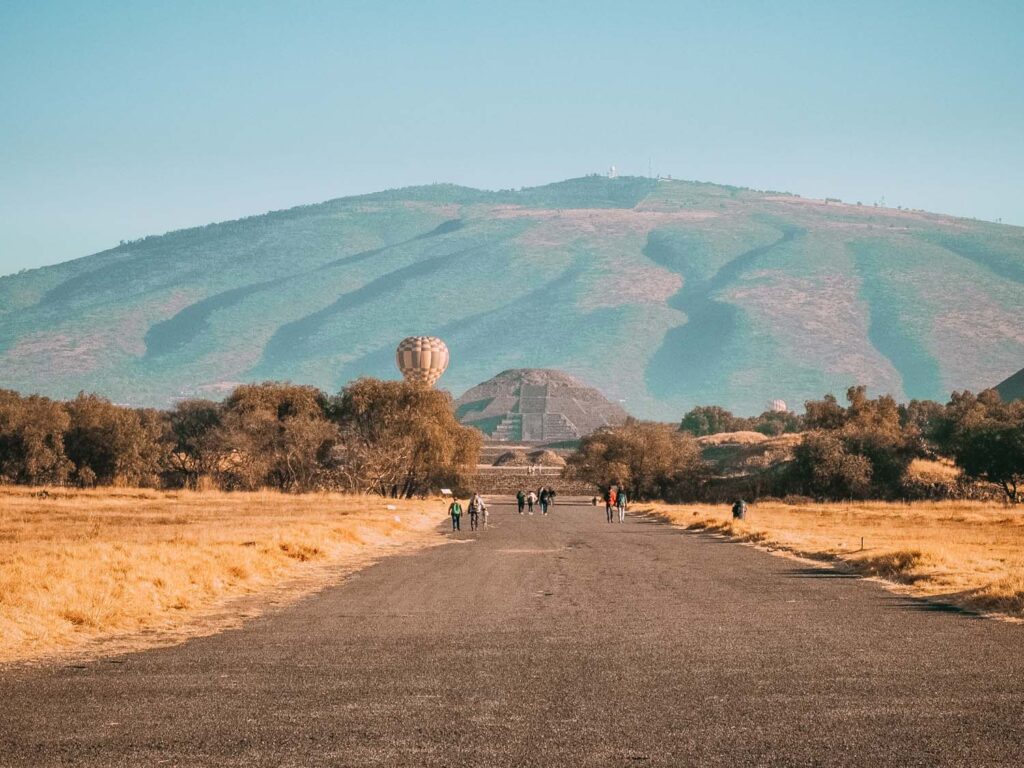
Pyramid of the Sun
The crowning glory of Teotihuacán is no doubt the Pyramid of the Sun. It is the largest of all the Pyramids in the city and still stands as its guardian. It is also the third-largest pyramid in the entire world. The name comes from the Aztecs, who first discovered it in 500 BC. The pyramid was built in two phases from 100 CE to 200 CE. Over 1.1 million cubic meters of adobe mud and bricks were used to build the giant structure. The amount of work and number of people it would have taken to build this structure so many years ago is just staggering.
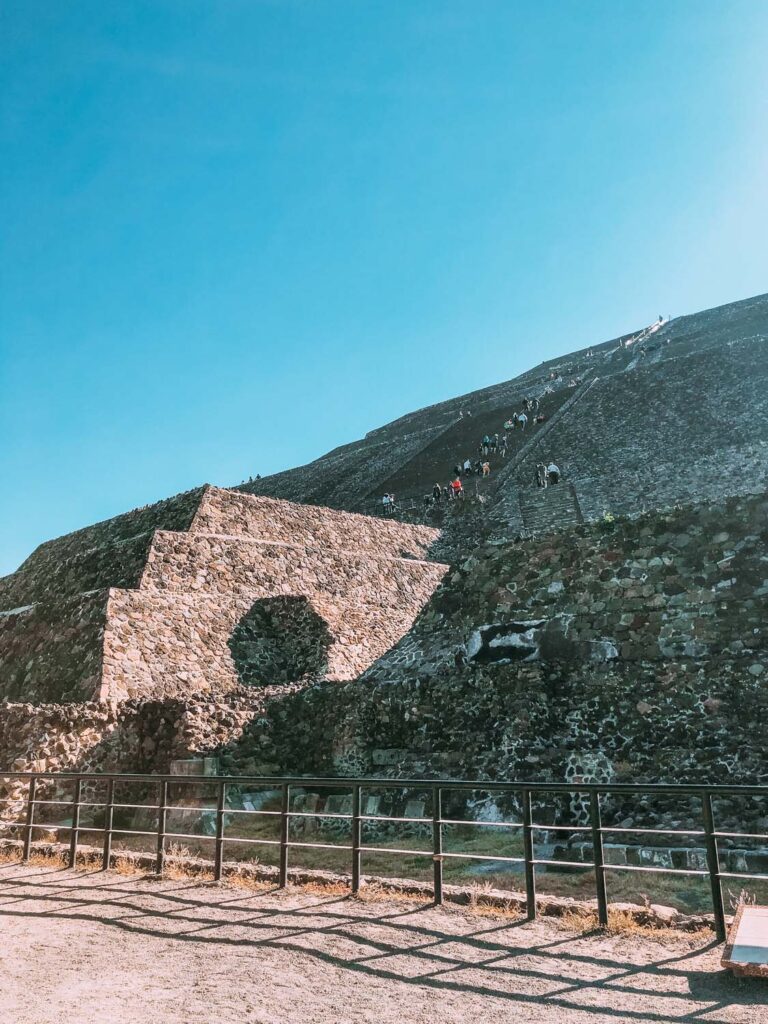
Star Alignment
The location of this pyramid was very important to the people of Teotihuacán. The positioning of each of the pyramids is one of the most advanced and astonishing things about ancient Teotihuacán. The pyramids align perfectly with the three stars of Orion’s belt as they appear in the sky on August 11th. Why August 11th, you ask? Well, this is what the people of Teotihuacán believed was the date of the “birth of the world.” While this knowledge of the stars in the sky leads some people to believe in their construction by the hands of otherworldly creatures, I think it also points to these incredible people’s extremely advanced knowledge.
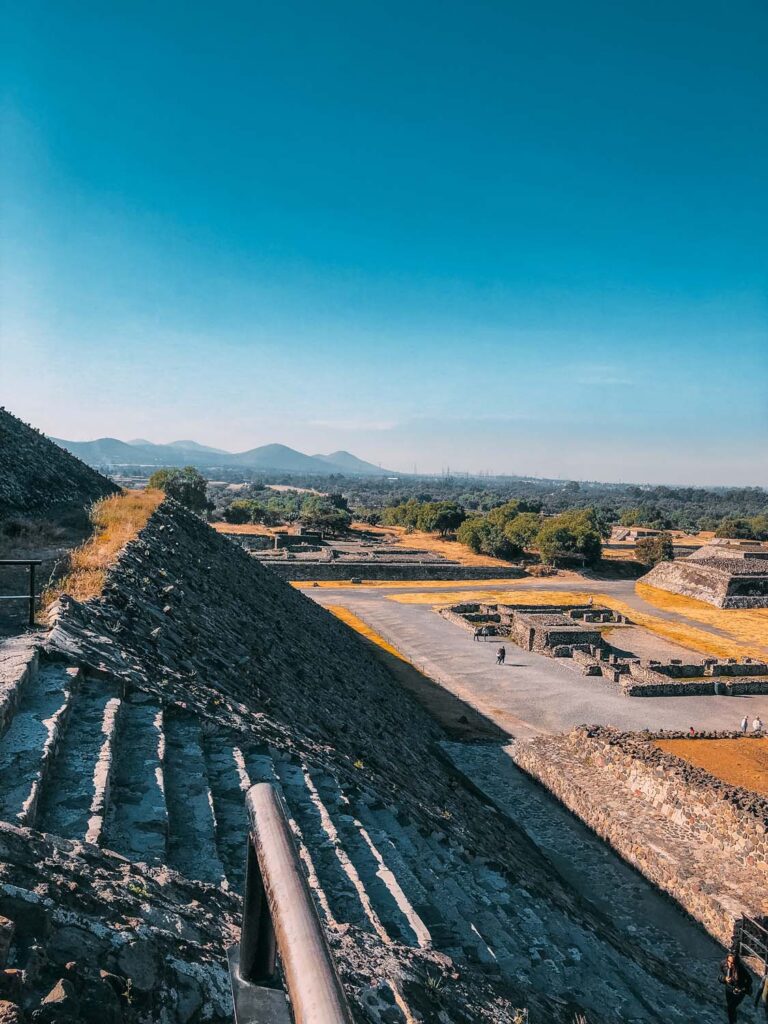
When it was first built, the pyramid would have been painted in bright colours and covered in rich murals. Some of these murals can still be seen in the archeological museum.
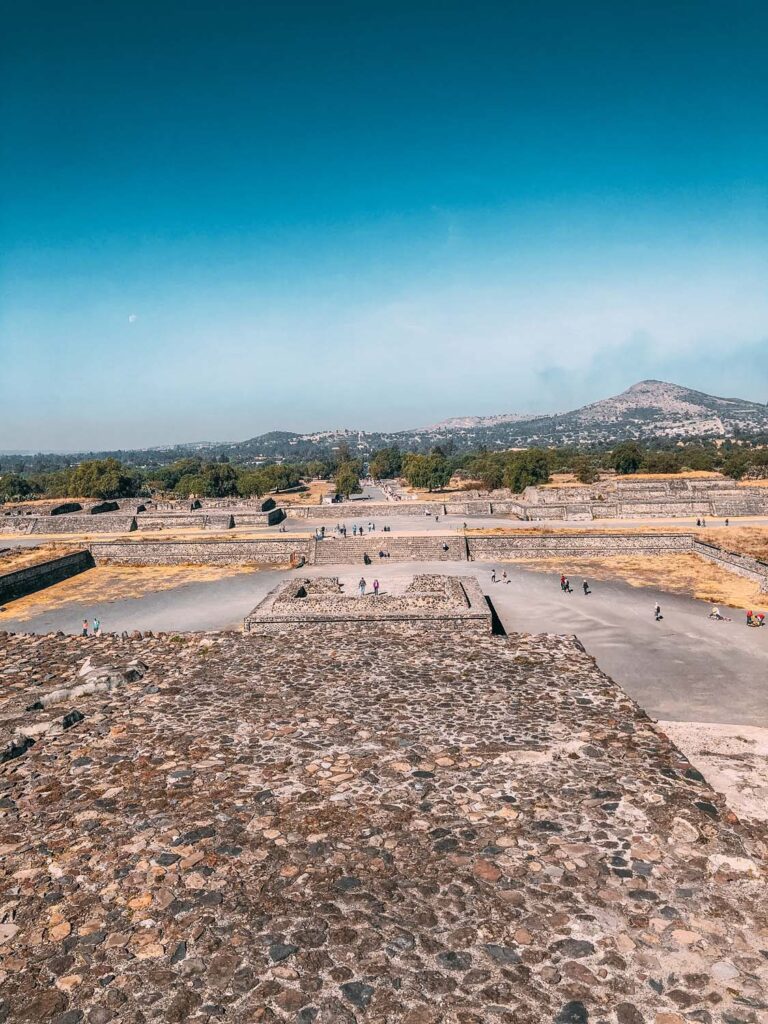

Height of the Pyramids
The pyramids are 200 feet (63 meters) tall. And one can only imagine what the view from above would have looked like when this city was exploding with life during its heyday.
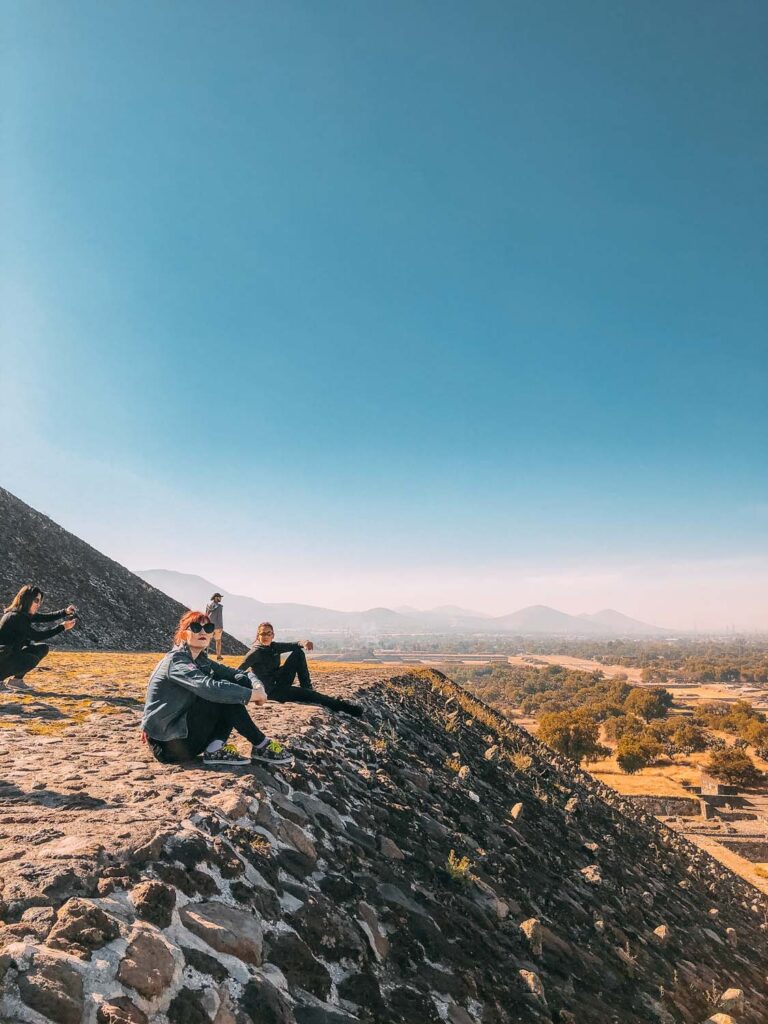
We were lucky enough to visit Teotihuacan before they closed the climb up the pyramids. Reaching the top of the pyramid was a real moment for me. We arrived at a time of day when there weren’t too many people who had made it to the top, and the silence was beautifully deafening up here. The humidity was low, and you could see so far away from the valley’s centre. I tried to imagine the hundreds and perhaps thousands of smaller buildings that would have also surrounded the city. I tried to think how far it stretched, almost like the first metropolis.
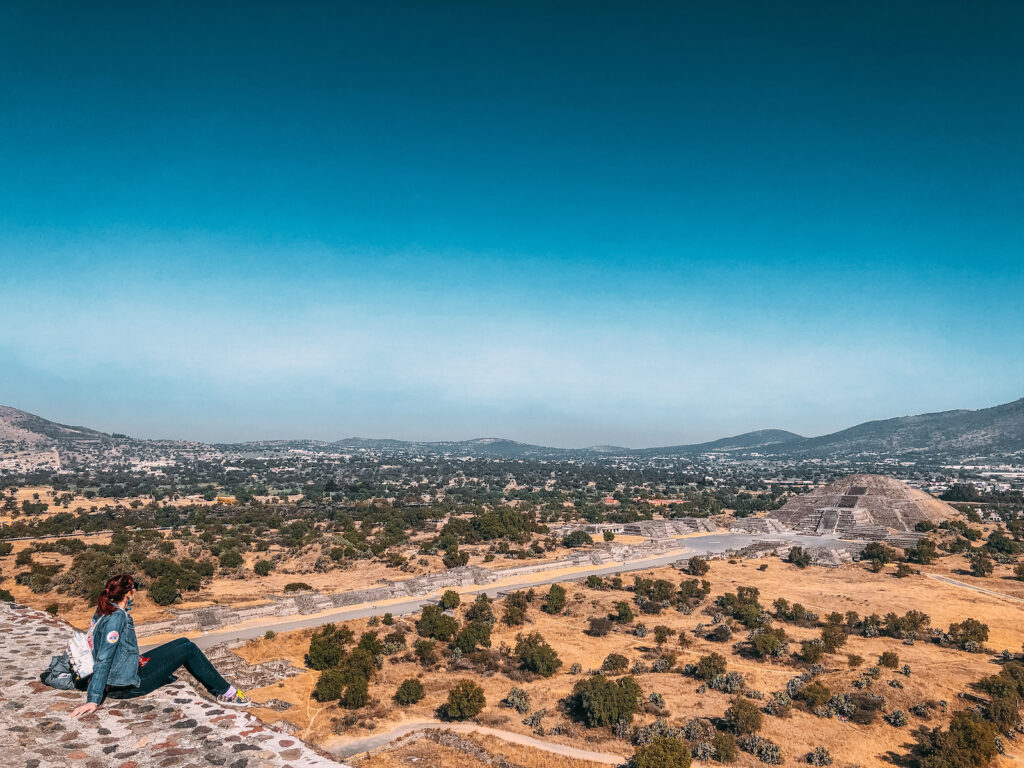
Museo de la Cultura Teotihuacana
Along the Avenue of the Dead, you’ll come to a small pathway on the right, leading you to the Museo de la Cultura Teotihuacan or Archeological Museum and the Botanical Gardens. You’ll have to backtrack slightly to get there, but I think it’s more important to see and climb to the top of the Pyramid of the Sun first since there will be fewer tourists earlier in the day. I thought this museum was really interesting and worth the effort of visiting. If museums aren’t your thing and you’d rather keep exploring, you can miss it. It’s also a great indoor area to escape to in the heat of the afternoon sun if you need to cool down.
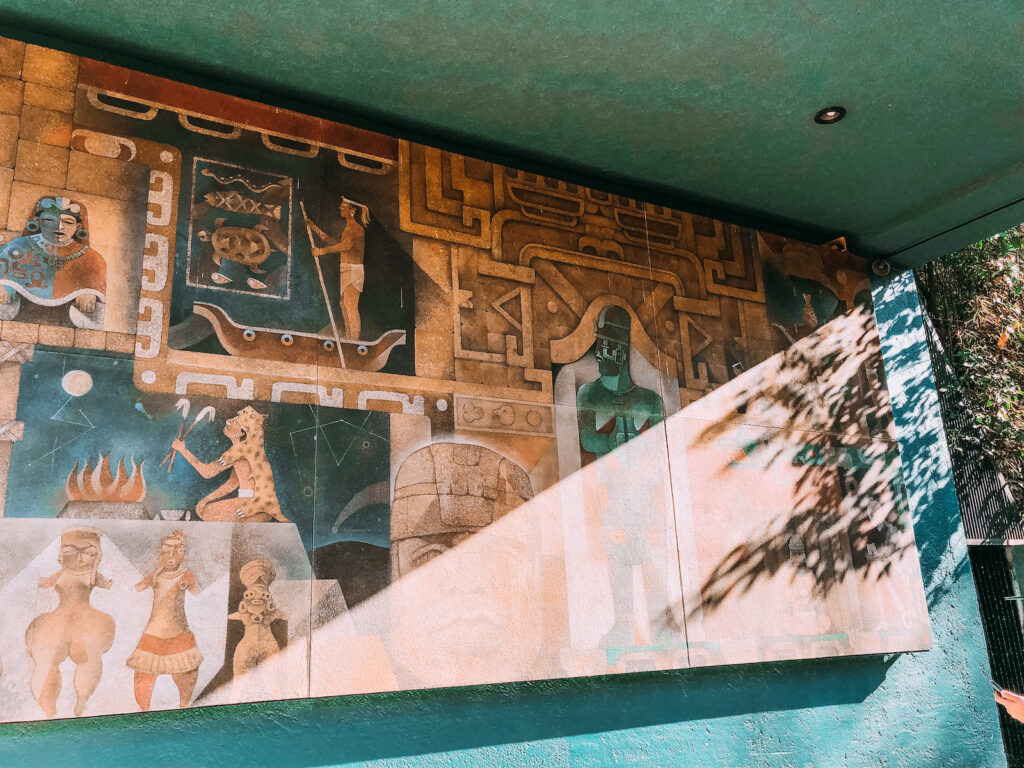
In this museum, you can learn more about Teotihuacán’s history and see many of the different discoveries that have been uncovered from the dig sites. Here you can study objects used in daily life inside Teotihuacán. There are beautiful carvings dedicated to the various gods. And hundreds of pieces of jewelry made from shells, bones, rocks and more.
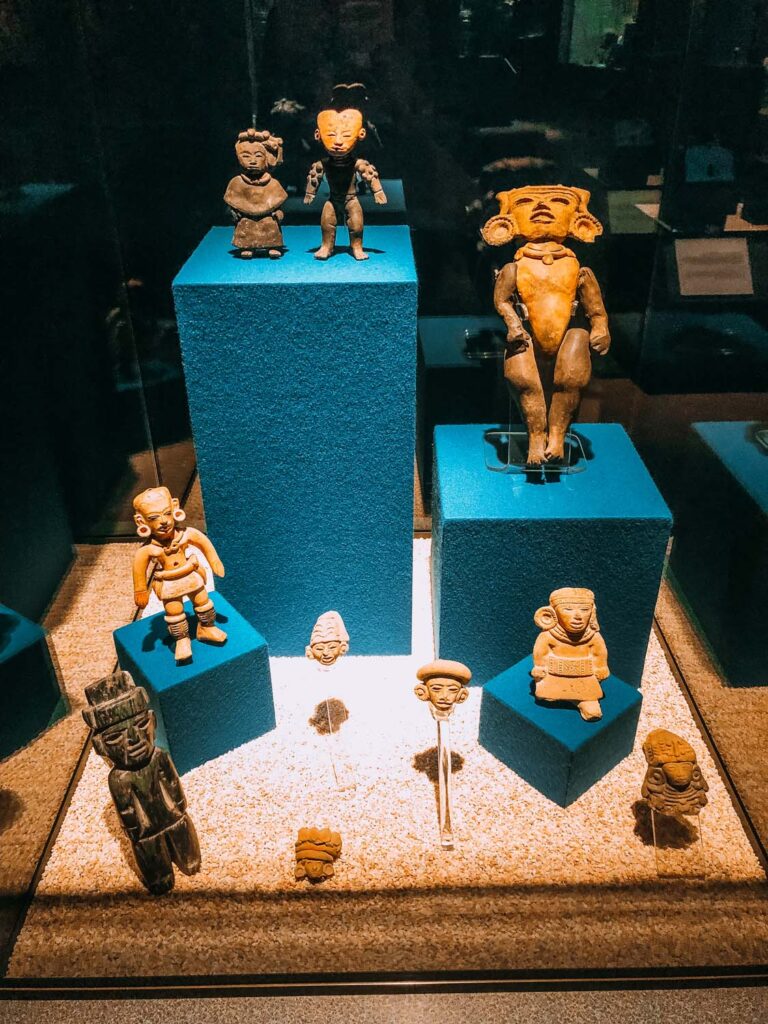
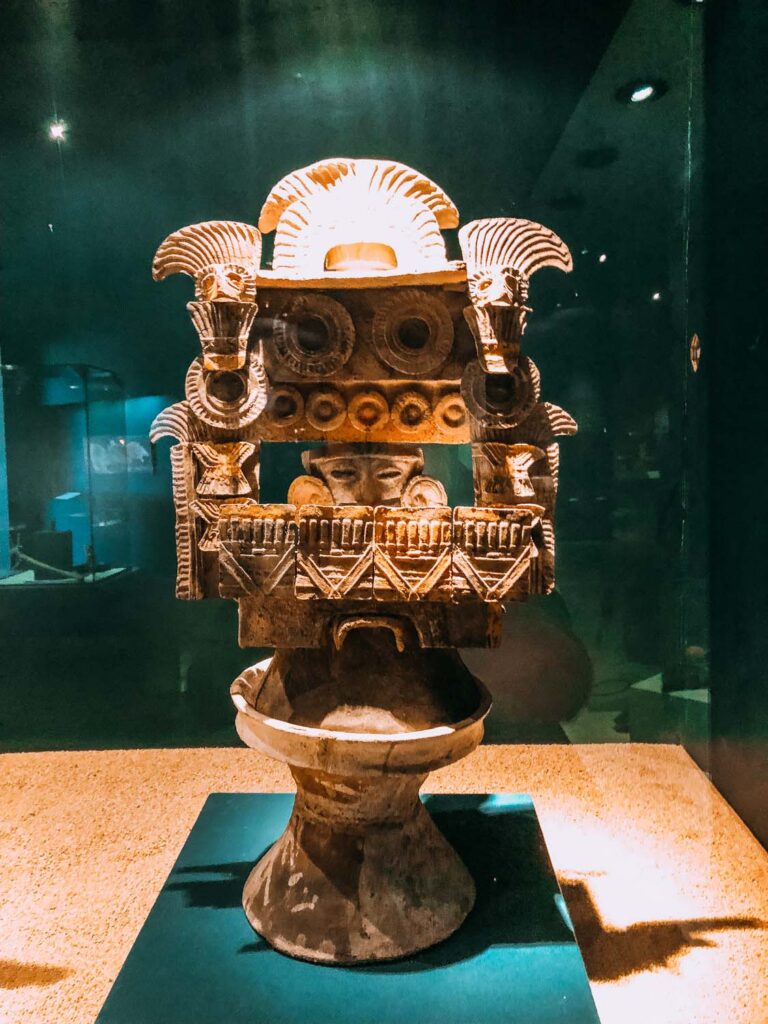
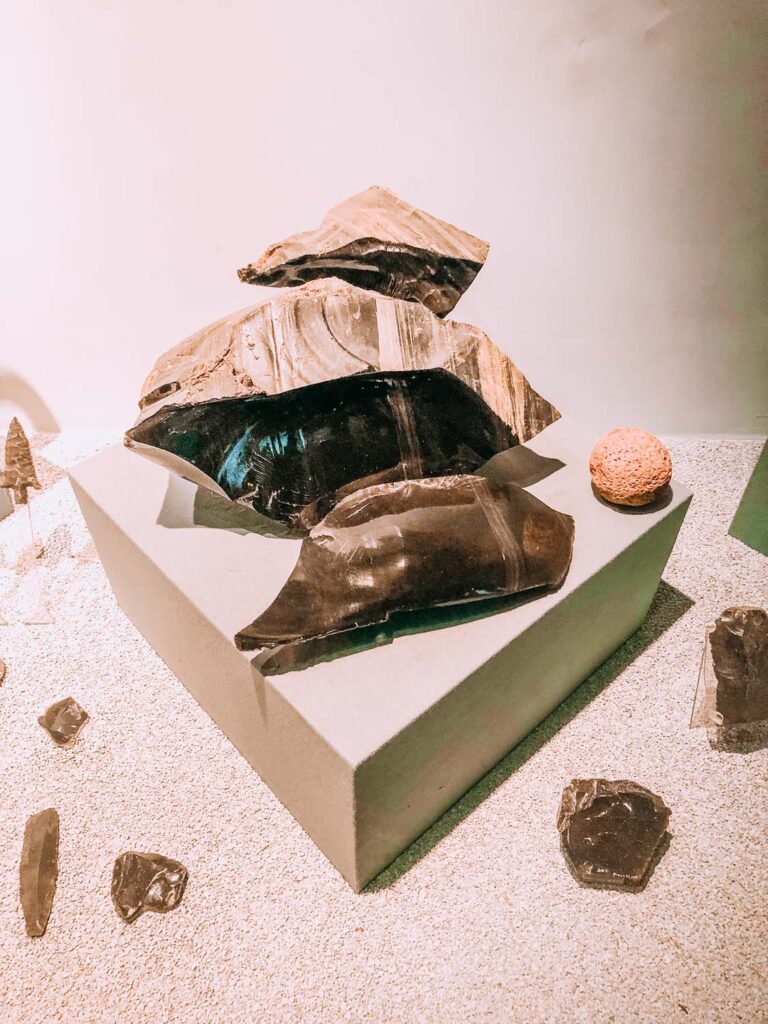
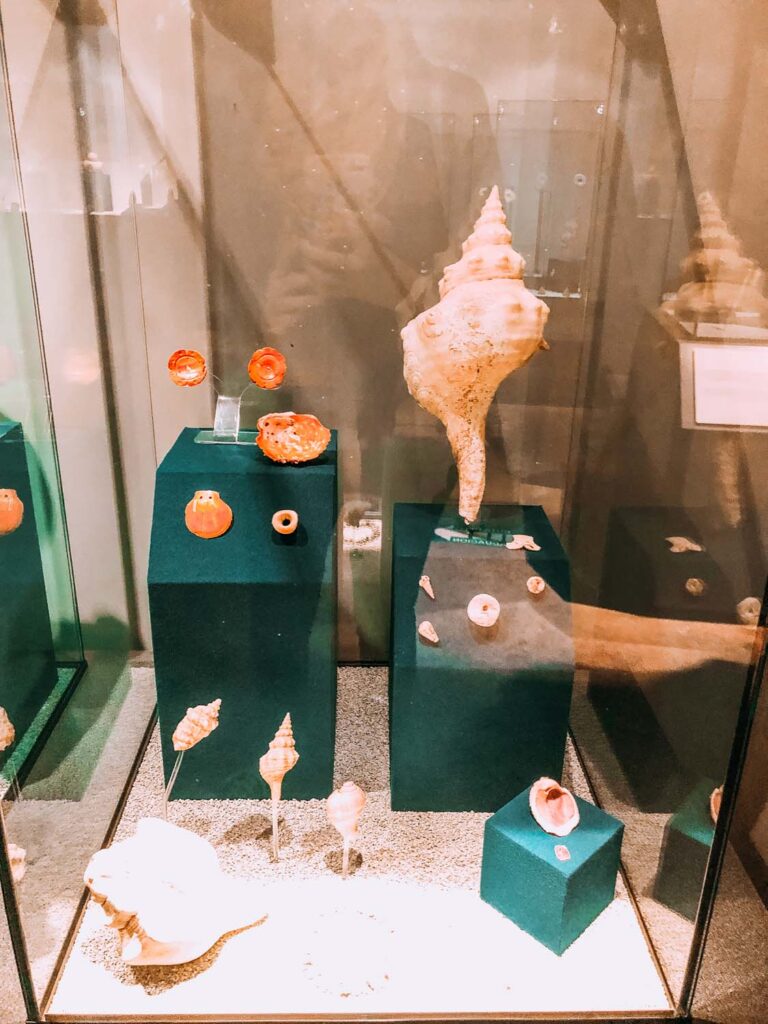
Funerary Objects
One of the most interesting parts of the museum is the areas dedicated to burial and funerary materials, as well as a look into human sacrifices! One of the most prevailing stories of ancient Mesoamerican cities is the dark stories of human sacrifice. Originally, it was thought Teotihuacán was quite peaceful, but archaeological digs reveal a darker history. It is well documented that Teotihuacános practiced human sacrifice. Many animal and human skeletons have been found during excavations around the pyramids, consistent with sacrificial burials.
It is strongly believed that to commemorate the building of new structures, the Teotihuacán people would make a human sacrifice, often of a captured enemy, bringing good fortune to this new building. Male warrior skeletons were some of the most prolific remains on the sites. In their hands were large weapons, and they wore ornate necklaces made to look like they were made of human teeth. The stones were carved to look like the lower jawbone of humans to put fear into any enemies they encountered. Animal sacrifices were also very important as they believed animals held mythical powers. When that animal was killed, it was said that the person or site would absorb those powers.
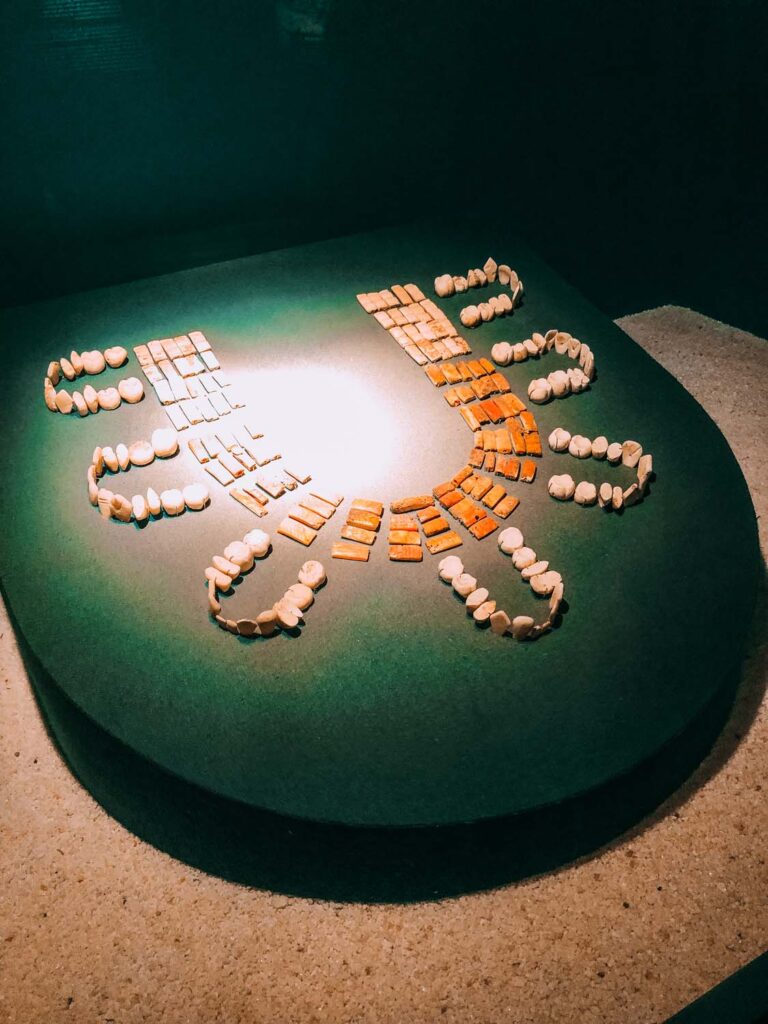
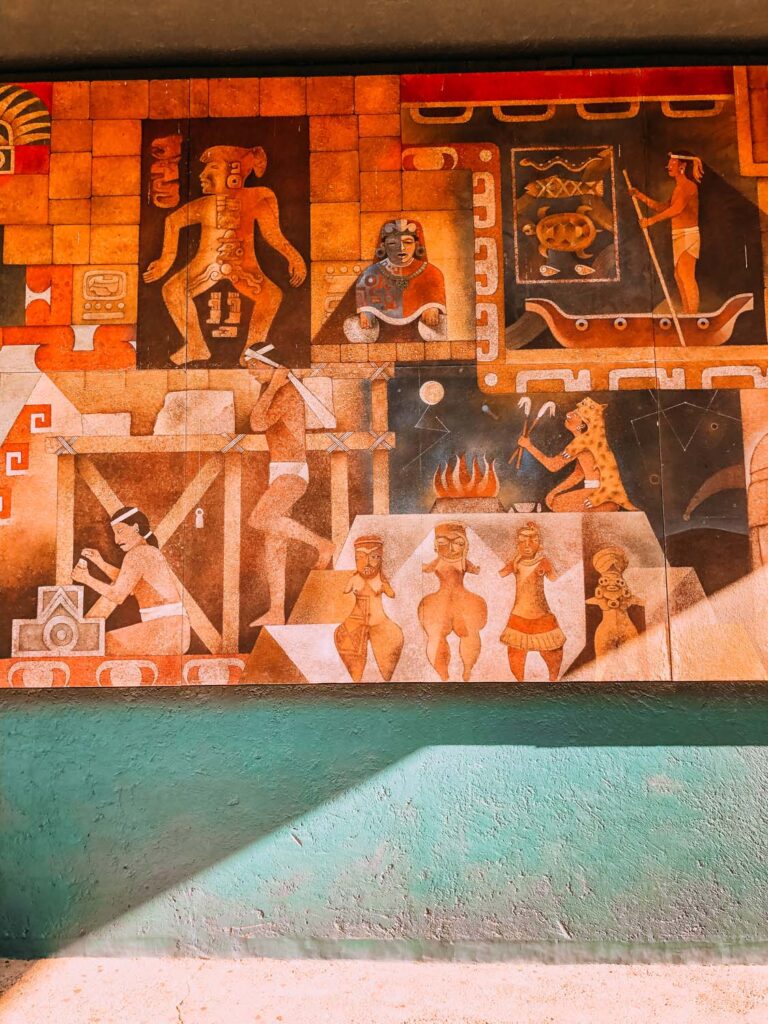
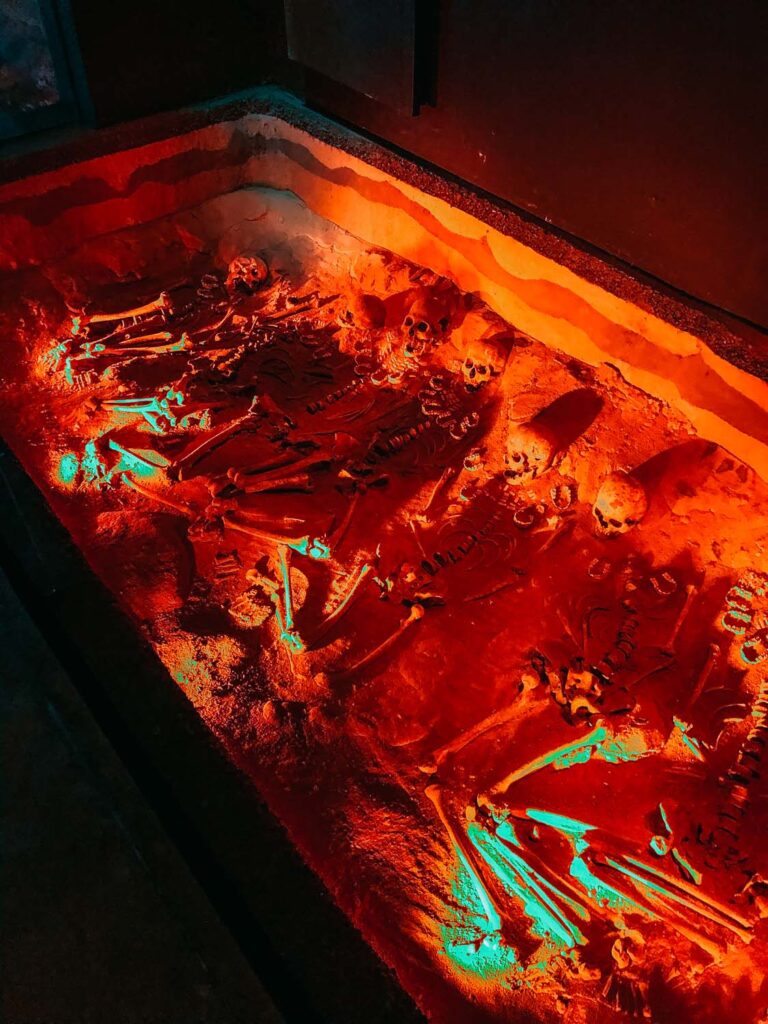
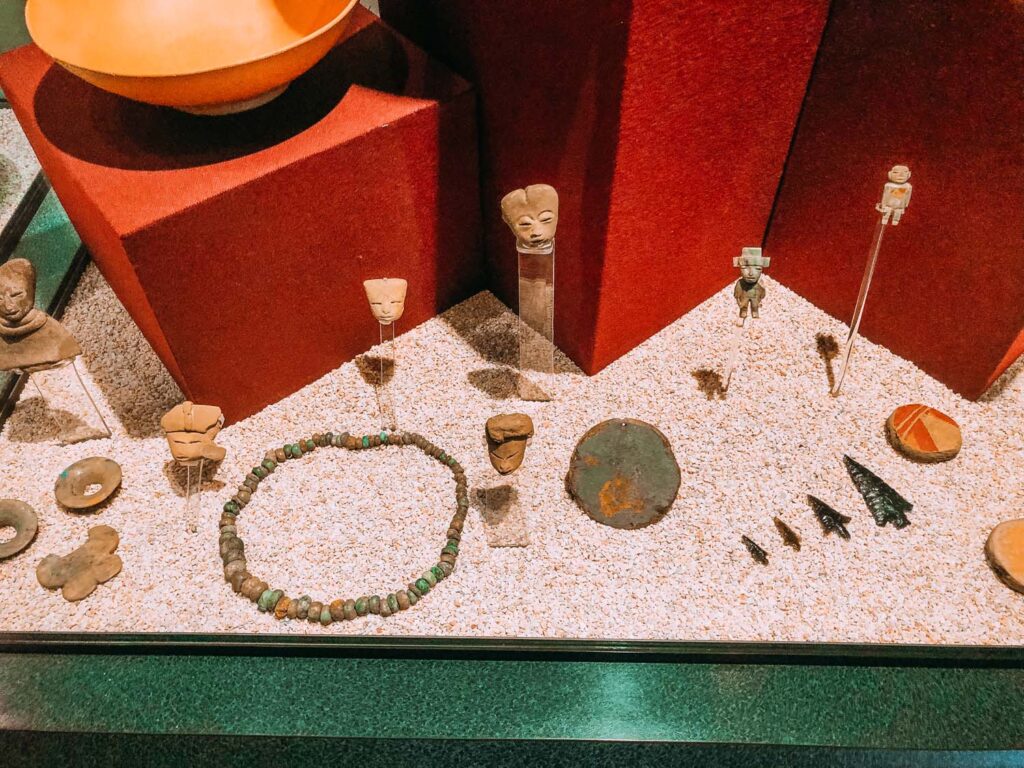
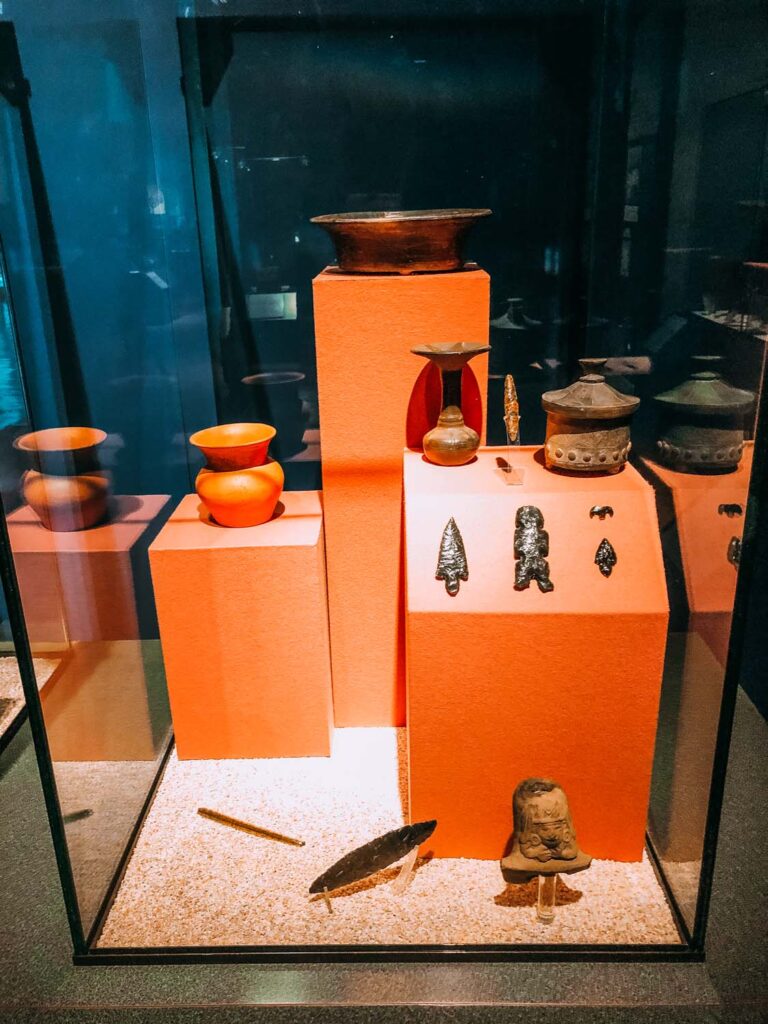
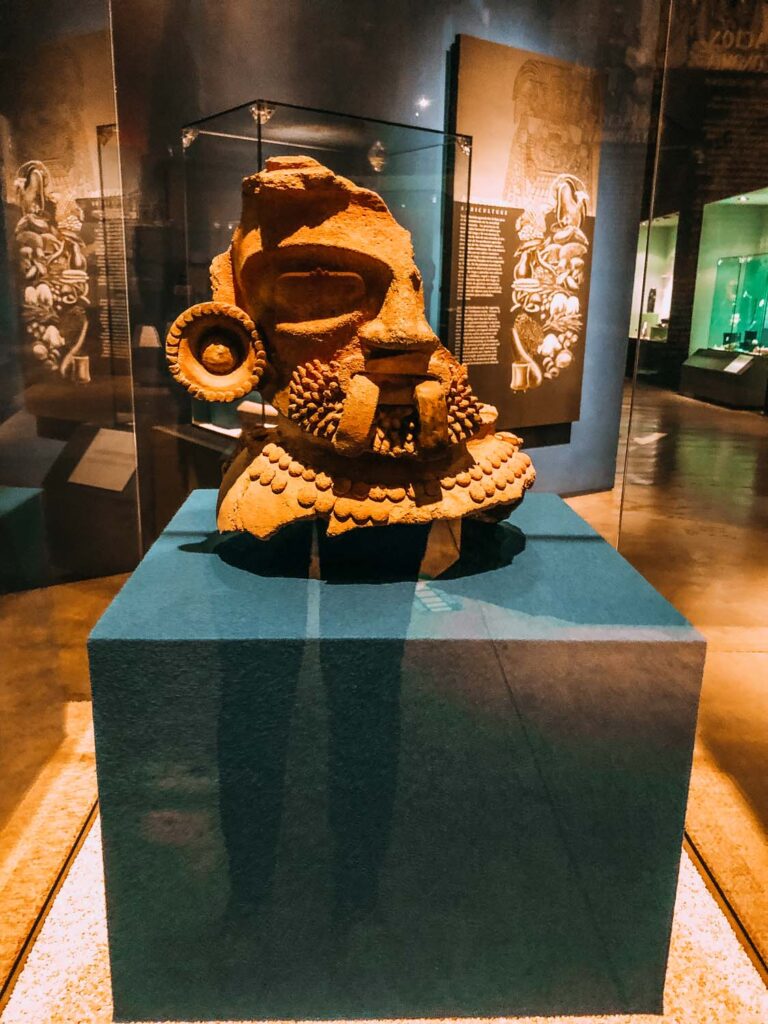
Model of Teotihuacán
Towards the back of the museum is a large minature model of the entire layout of Teotihuacán as it would have appeared when it was first built. This gives you an idea of the scale and relationship between different areas in a way you could never experience from the ground. Or really understand as it remains today with so many elements lost to time.
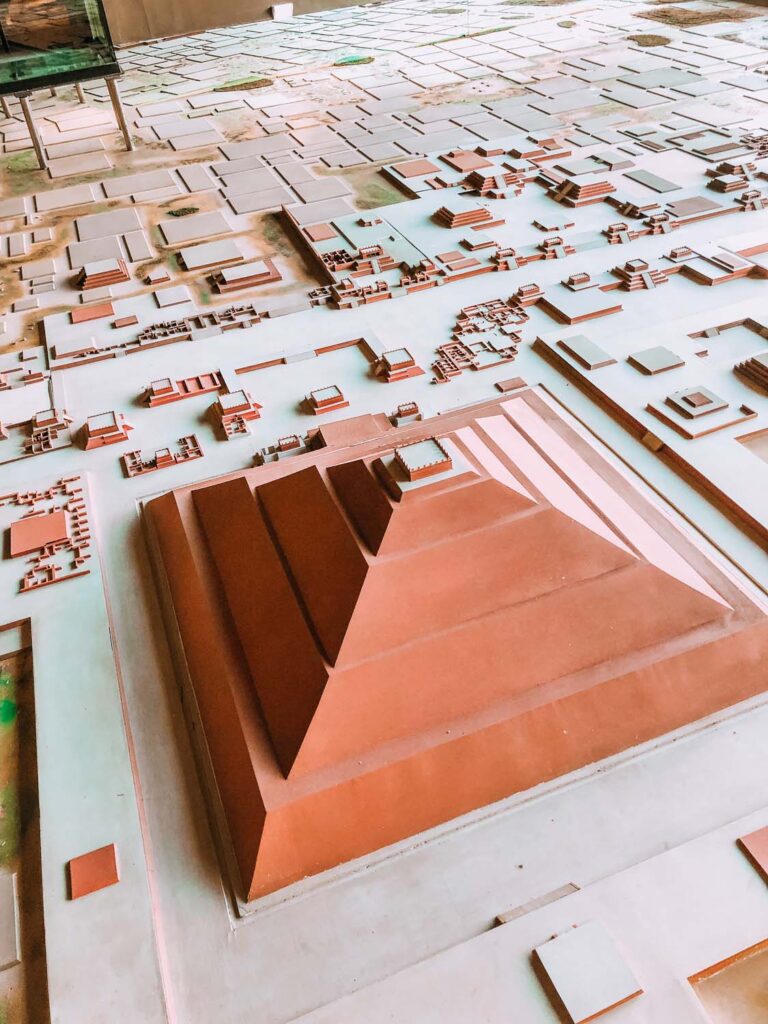
Botanic Gardens
Surroundings of the archeology museum are beautiful curated botanic gardens. This garden is a protected area that contains plants that would have grown here naturally in 200 CE. The gardens ensure the preservation of these ancient plants. You can find nopal, manzanilla, plum, avocados, figs, lime trees, cherry, bitter, aloe vera, but also cactus, agave, and cardi plants.
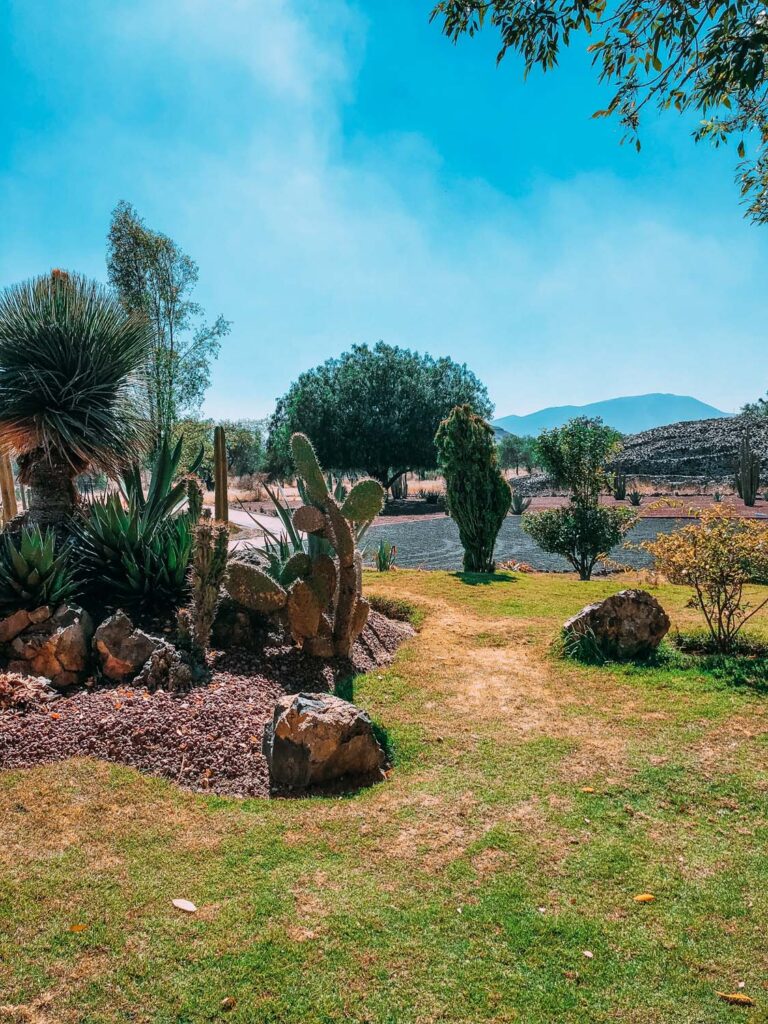
The Quetzalpapálotl
Quetzalpapálotl is a complex of ruins that were thought to once be an ancient Palace. Here is where you can see some of the most amazing murals, in situ. These precious paintings still exist today as they were protected from the elements being indoors. This building was constructed around 450 CE. But remnants of an even older structure have been found underneath that date back as early as 250 CE. Since this palace contains so many beautiful and intricate murals, it is thought that this part of the complex was where high-ranking priests of dignitaries lived. As it was occupied by the priests, it is safe to assume that many rituals or sacred ceremonies would have taken place here.
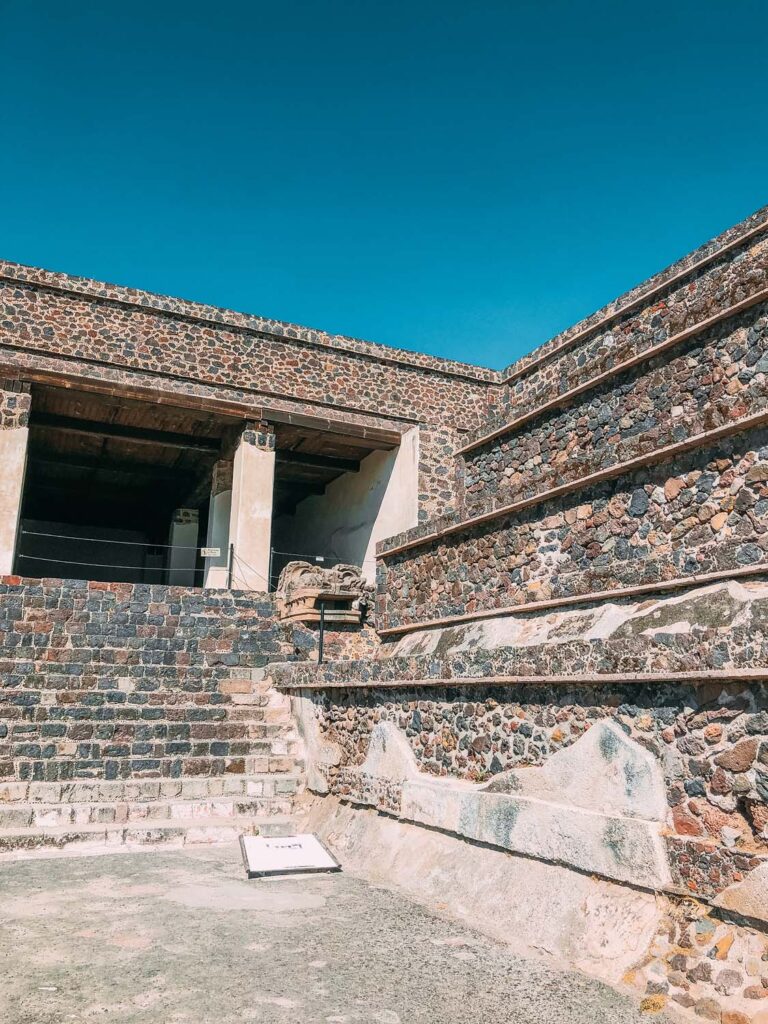
Inner Courtyard
One of the most alluring parts of the building is the inner courtyard, where you can find a series of intricately carved pillars. These pillars represent various mythological creatures from which the name of the building comes.
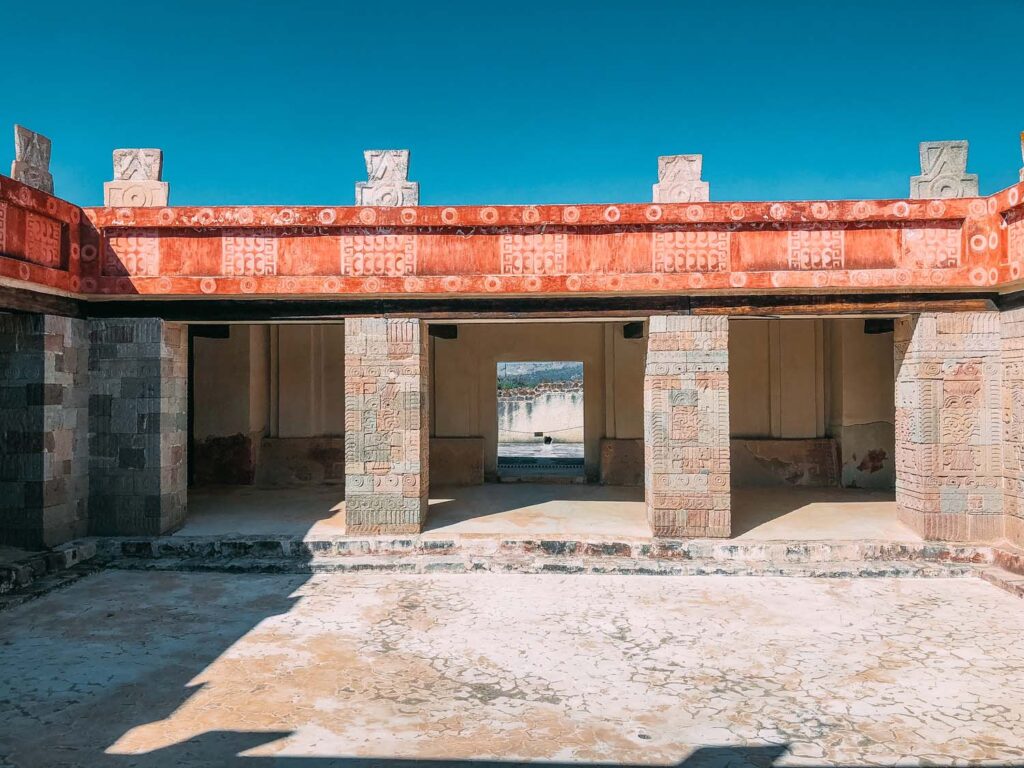
The birds seen here are the Nahuatl quetzal which means precious feathers. We can also see images of the pāpālōtl, which are Aztec butterflies.
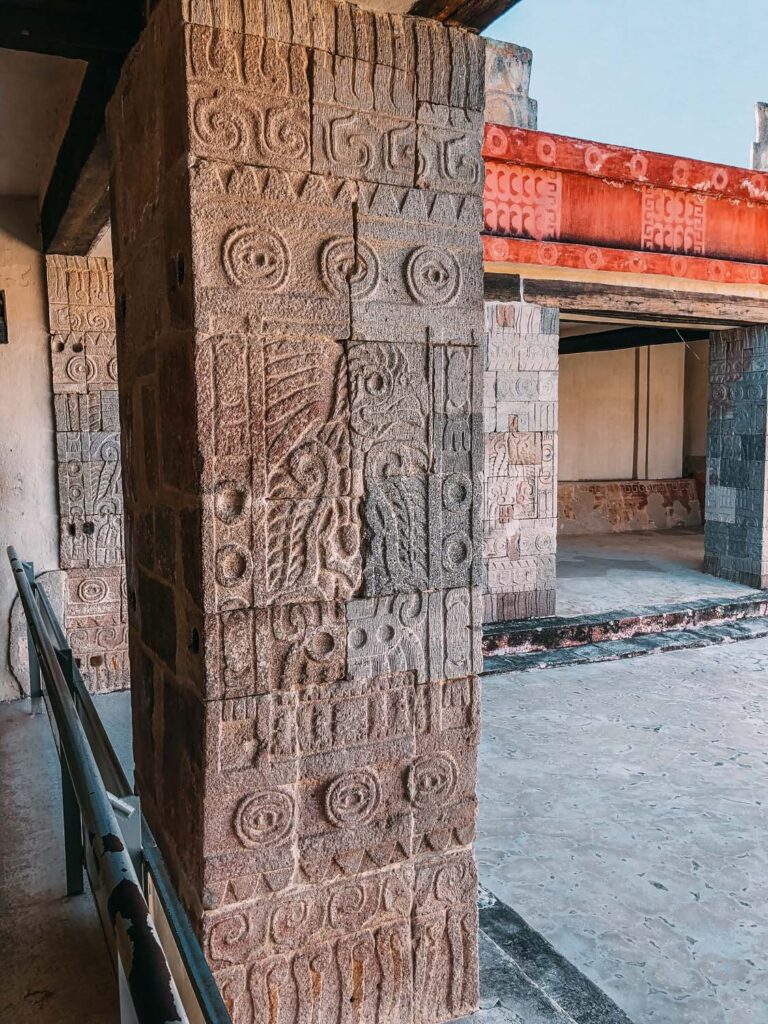
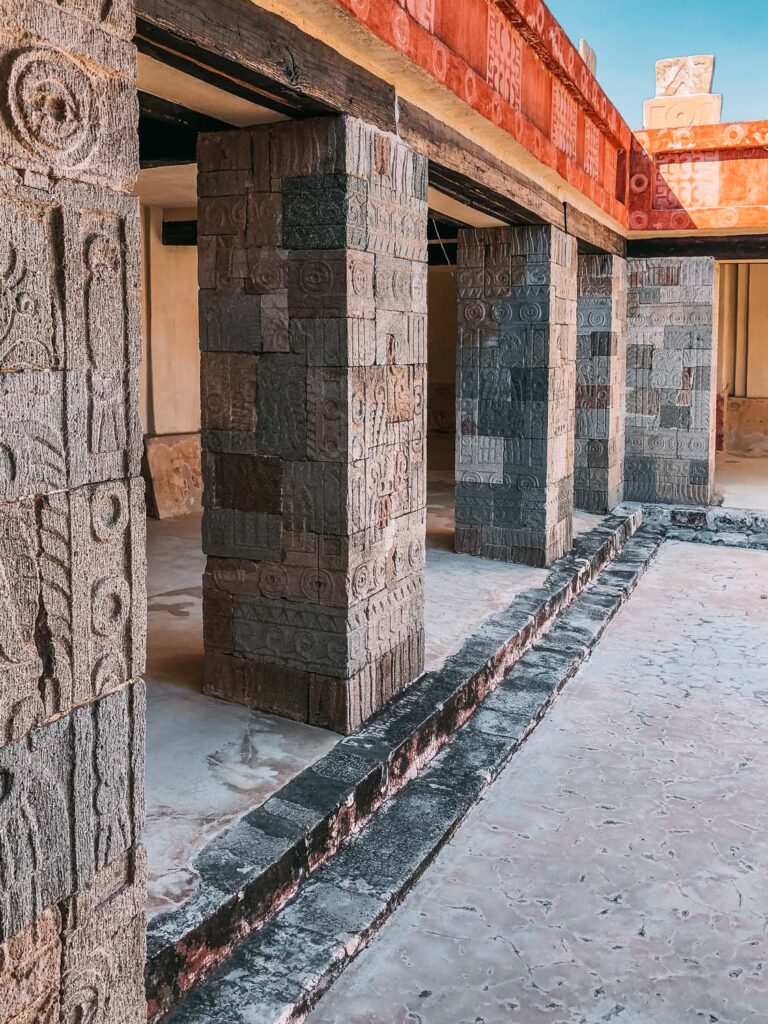
Palace of the Jaguars
In a small room inside the palace, you’ll find the red-painted murals of the Palace of the Jaguars. These murals depict plumed felines holding conch shells in their mouth. These murals were thought to represent war as conch shells were used to announce incoming armies during great battles. See if you can spot the rain god Tlaloc, with his googly eyes and large fangs. Many of these murals are of the highest quality and show off the level of artistry that was present in this community. Many cities would not have had such skilled artisans, so the fact that Teotihuacán employed such artists is more evidence of the greatest of their city.
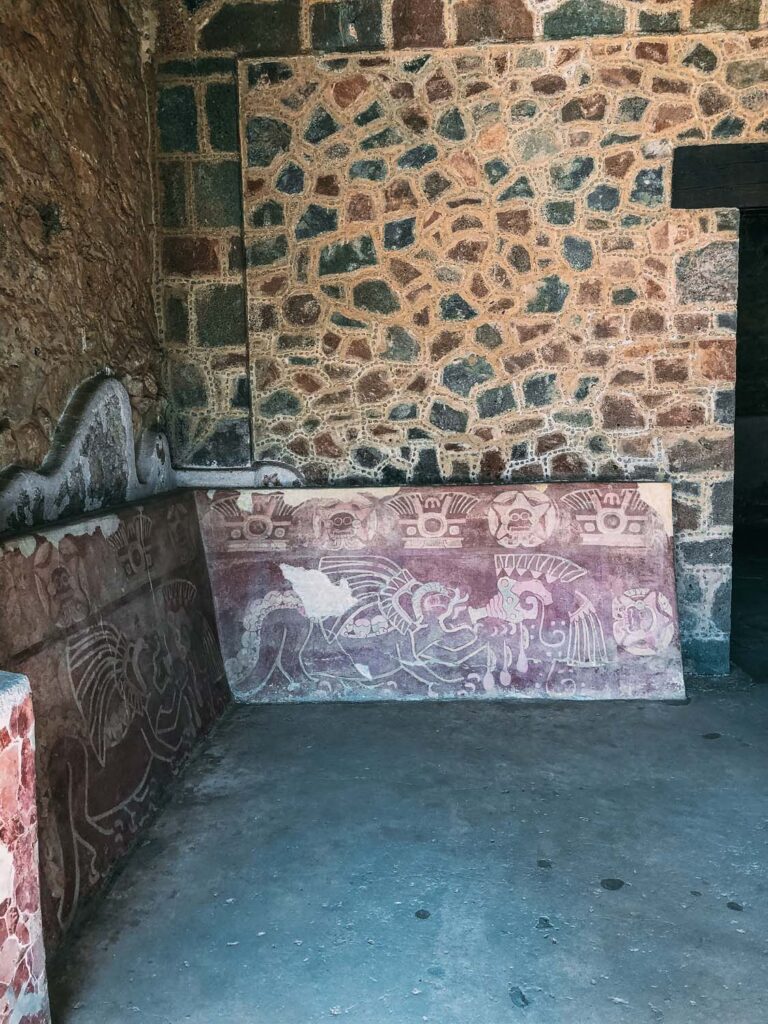
Templo de Los Caracoles Emplumados
Inside the Palace of Quetzapapalotl, you’ll find the hidden Templo de Los Caracoles Emplumados or Temple of the Feathered Feathered Conches. This temple is buried beneath the rest of the building. You can see a clear carving of the feathered conch on one of the columns. Conch shells were only worn by religious rulers, so this could have been where the city’s rulers would have come from.
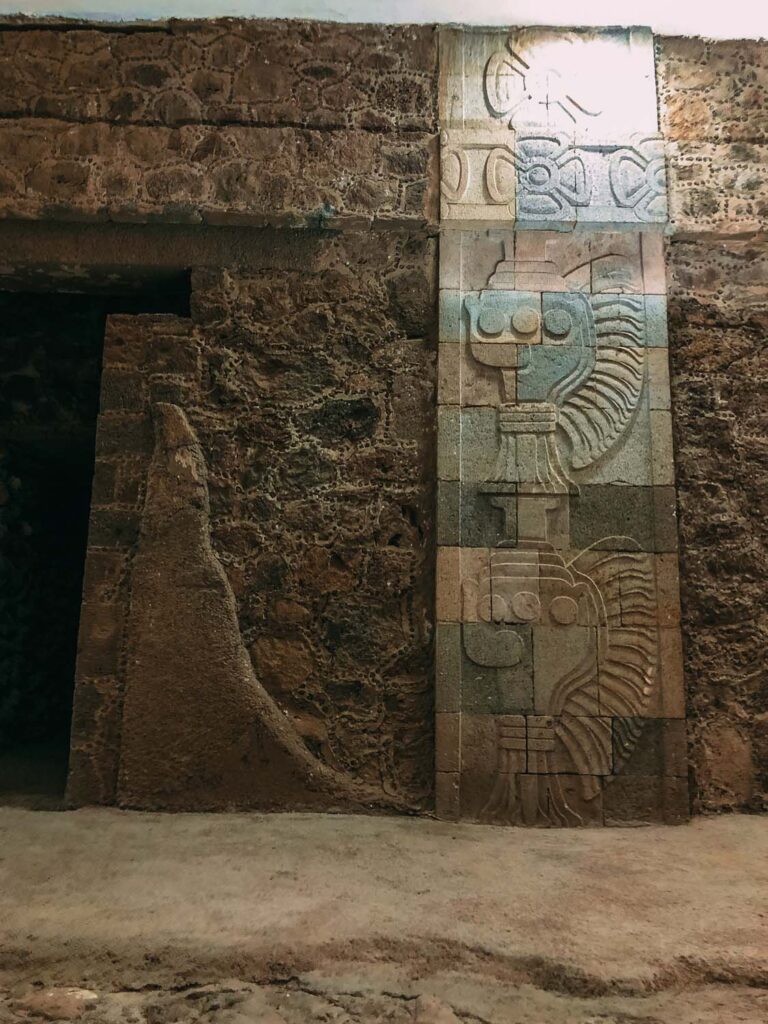
Also found in the temple are some incredible green birds. These birds are known as the quetzals. Stream water flows towards a three-petaled yellow flower from their once bright orange beaks. Although the flower might look like a French Fleur-de-lis, it is actually thought to be a ripening maize (corn) plant with the leaves peeling back to reveal the cob of corn. Corn has forever been one of the most important plants grown by the Mexican people, so it shares this connection with these life-giving birds.
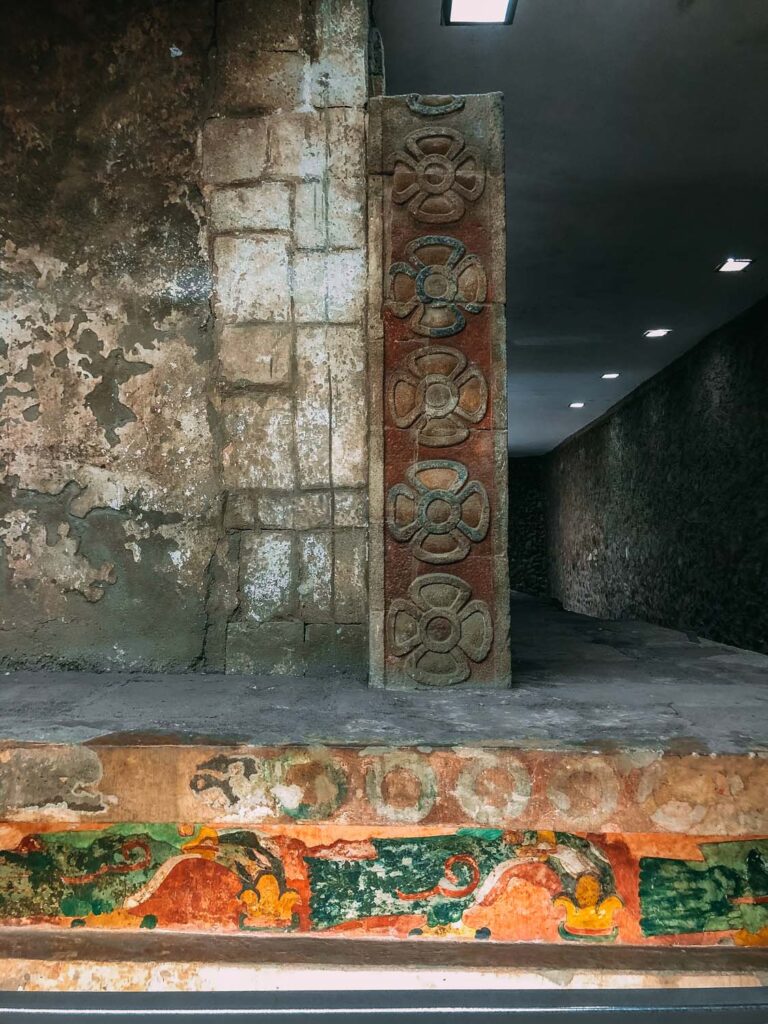
Cougar Mural
Exiting back on the Avenue of the Dead, as you near the pyramid of the moon, you’ll pass a small shelter that protects another precious mural. This is known as the Puma or Cougar Mural. This mural is a fantastic example of the decoration with which all the buildings along the Avenue of the Dead would have been painted. The puma (or cougar) is the central point of the mural. Its claws are enormous, showing off its ferocity and strength. The mural’s background is painted with waving lines, which were thought to represent the water.
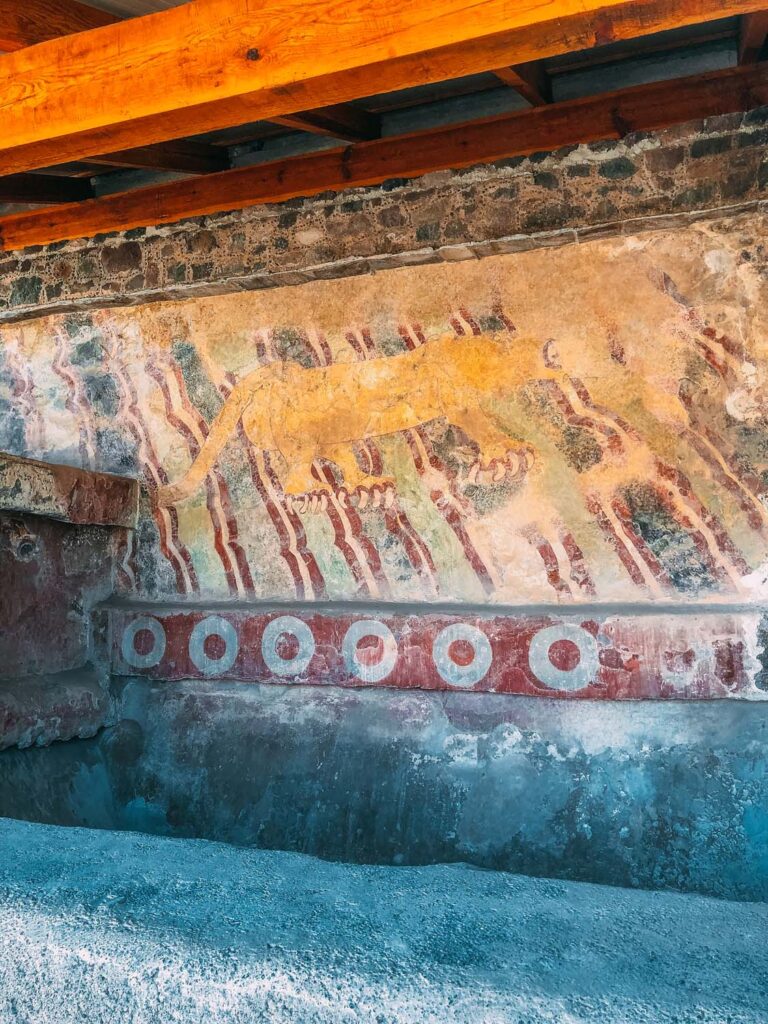
The Pyramid of the Moon
At the end of the Avenue of the Dead, we find the final pyramid, the Pyramid of the Moon. This is the second-largest pyramid on the site, built between 100 and 450 CE. Behind the Pyramid stands the great Cerro Gordo, or “Fat Hill.” The pyramid, while not as tall as the Sun pyramid, is very wide and almost mimics the shape of the hill behind it. In a mural found on the site, there is a depiction of “The Paradise of Tlaloc,” which shows the Cerro Gordo mountain as a life-giving natural wonder nourishing the’s people of Teotihuacán. The mountain helped farmers sow and water their crops and therefore was considered sacred and deserving of great reverence.
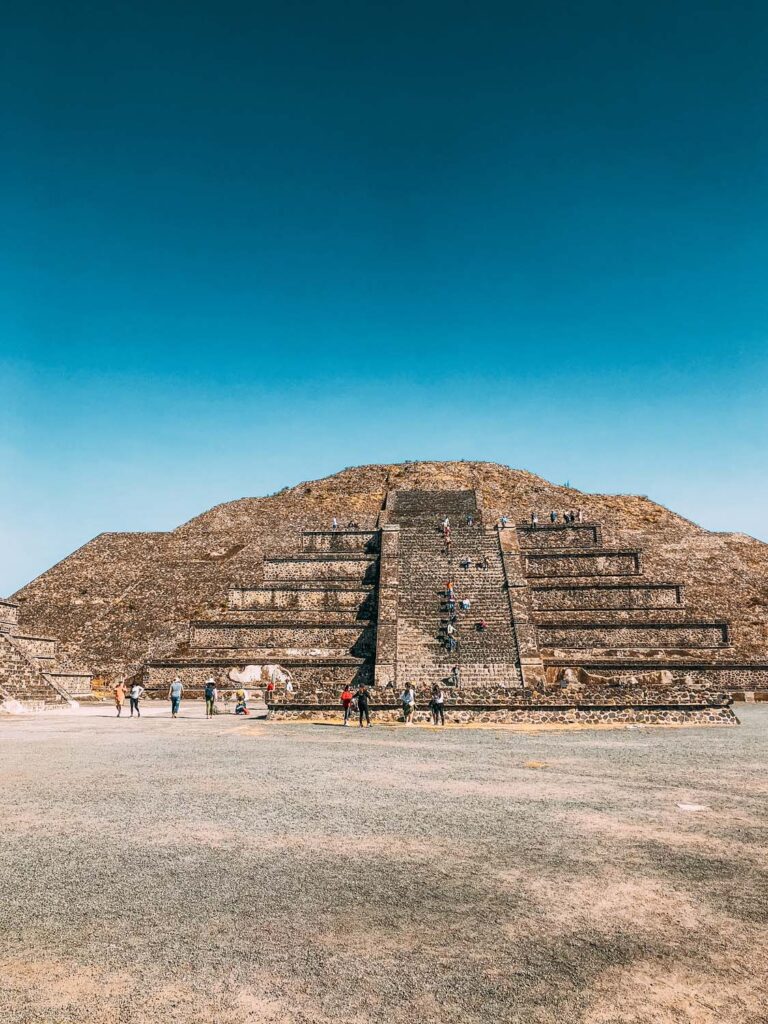
But there is a darker aspect of this mural as well. In addition to the water-giving nature of the mountain, the mural shows sacrificial enslaved figures, bound together, who are being fed to the mountain. This depiction confirms that this pyramid was where many sacrificial rituals were performed and was a burial ground for these victims. These burial sites contained felines, birds of prey, snakes, and, yes, even human remains. Since all the animals found on the site were carnivorous, it is thought that therefore the sacrifices were closely associated with warfare.
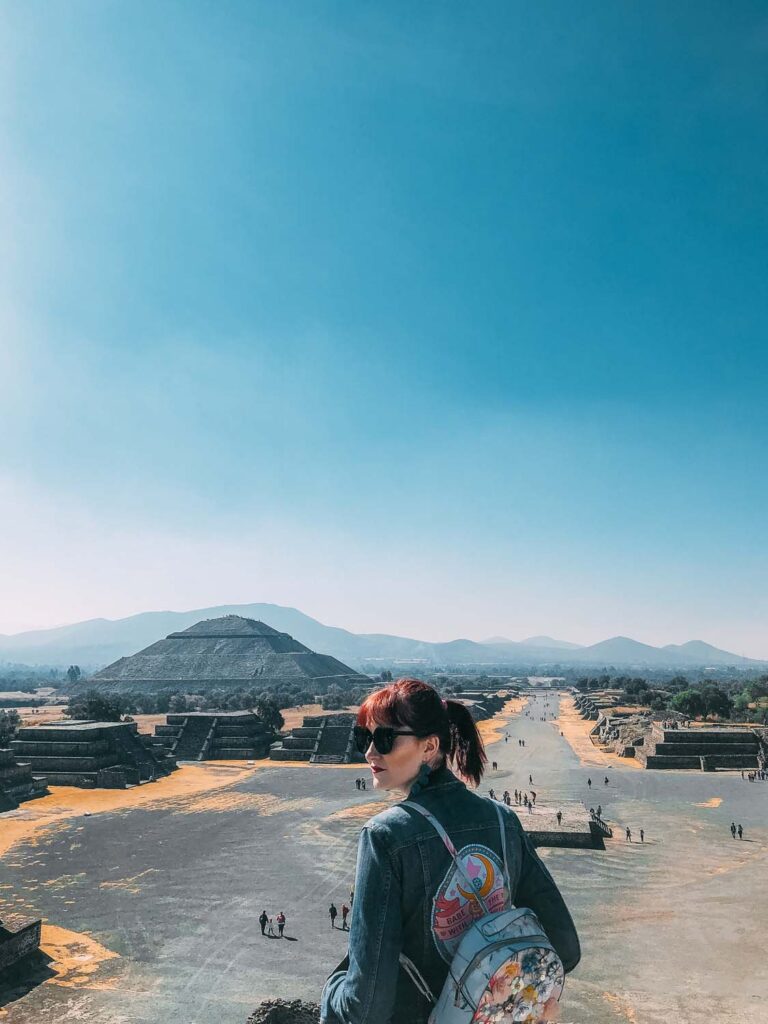
Great Goddess of Teotihuacán
As the moon is a part of the world of night, and therefore the underworld, the pyramid was thought to be a place that honours the Great Goddess of Teotihuacán. A tomb was discovered in the tunnels beneath the pyramid dedicated to the Great Goddess herself. There, they found a single human male sacrificial victim and a wolf, jaguar, puma, serpent, bird skeletons, and more than 400 other relics. Many of these items, such as ceremonial knives and spear points, were violent.
The placement of the Pyramid of the Moon at the end of the Avenue of the Dead has been theorized to represent the human journey coming to an end of the road. And the temple underneath is dedicated to the great goddess, your entry into the underworld.

In front of the pyramid is a large plaza that Mesoamericans used as a place of gathering and socialization. The plaza was used for astronomical observation as well. It is surrounded by pyramidal bases that would have housed temples and provided viewing platforms for the city’s elite.
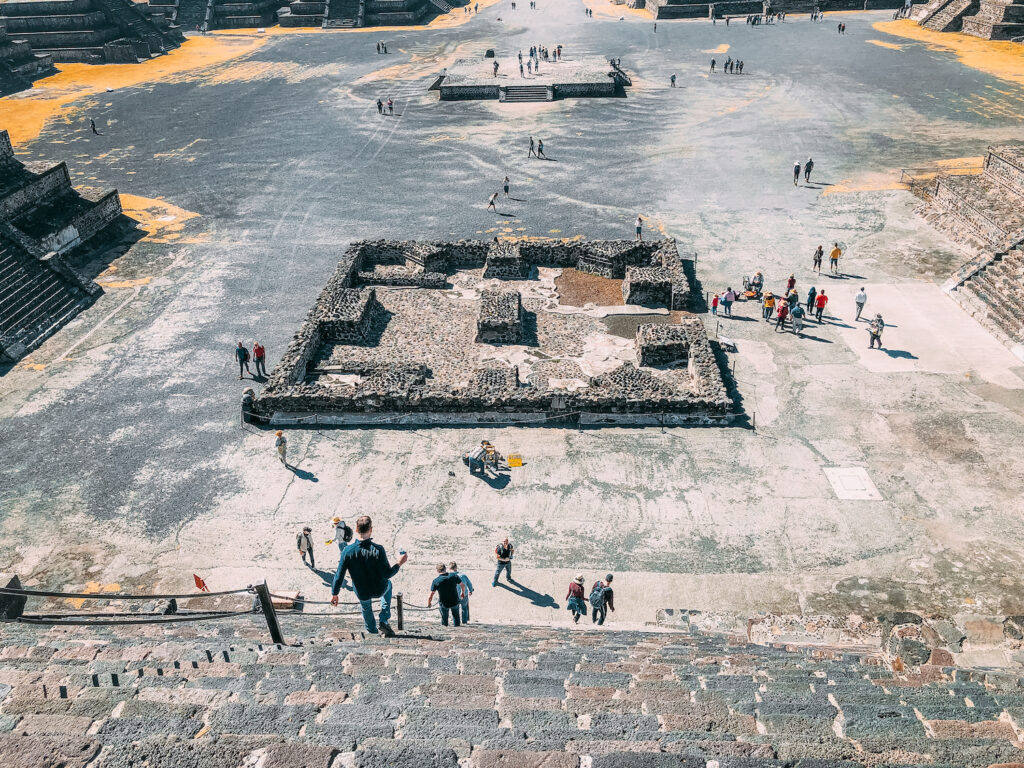
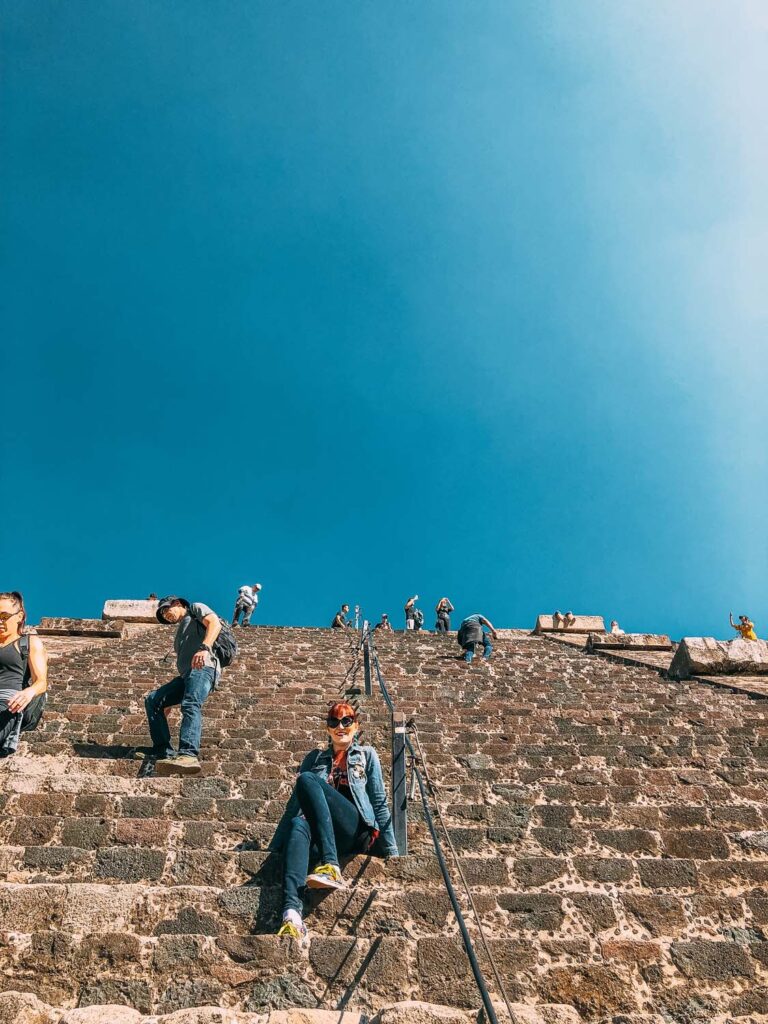
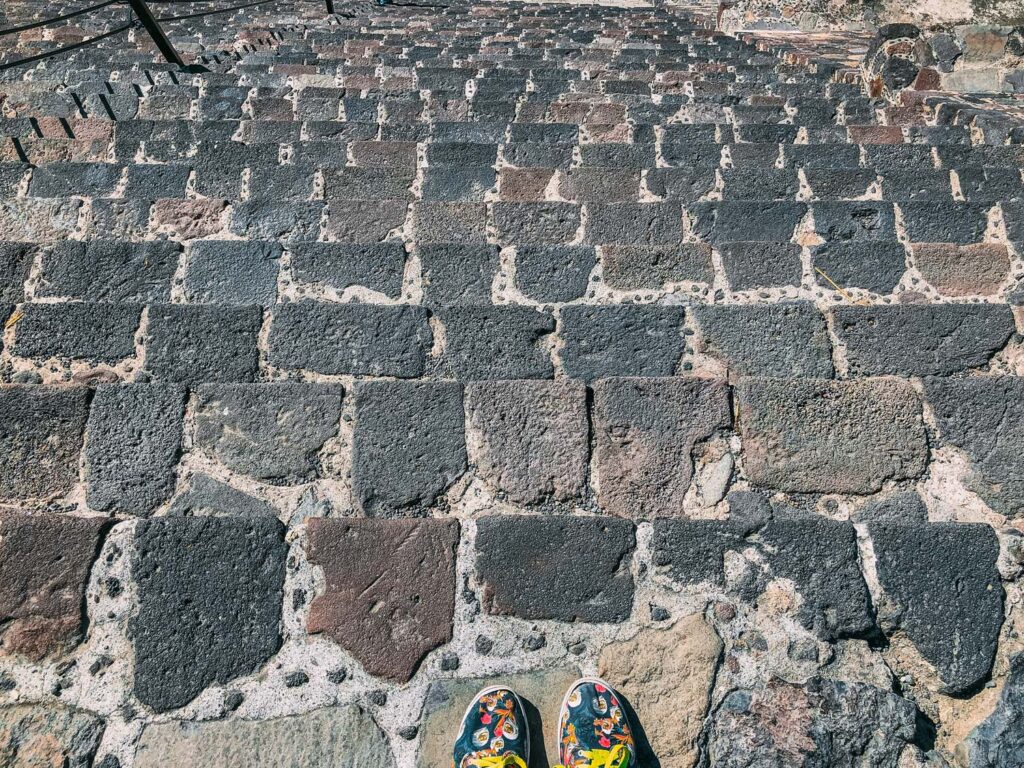
Museo de los Murales Teotihuacanos
I highly recommend visiting the Murals Museum of Teotihuacán if time allows. The museum houses hundreds of murals that have been excavated from the archeological zone. The murals are divided into themes that give you a glimpse at an artistic rendition of life in Teotihuacán. You can see paintings of the gods they worshipped and how these gods made an impact on the lives of the people.
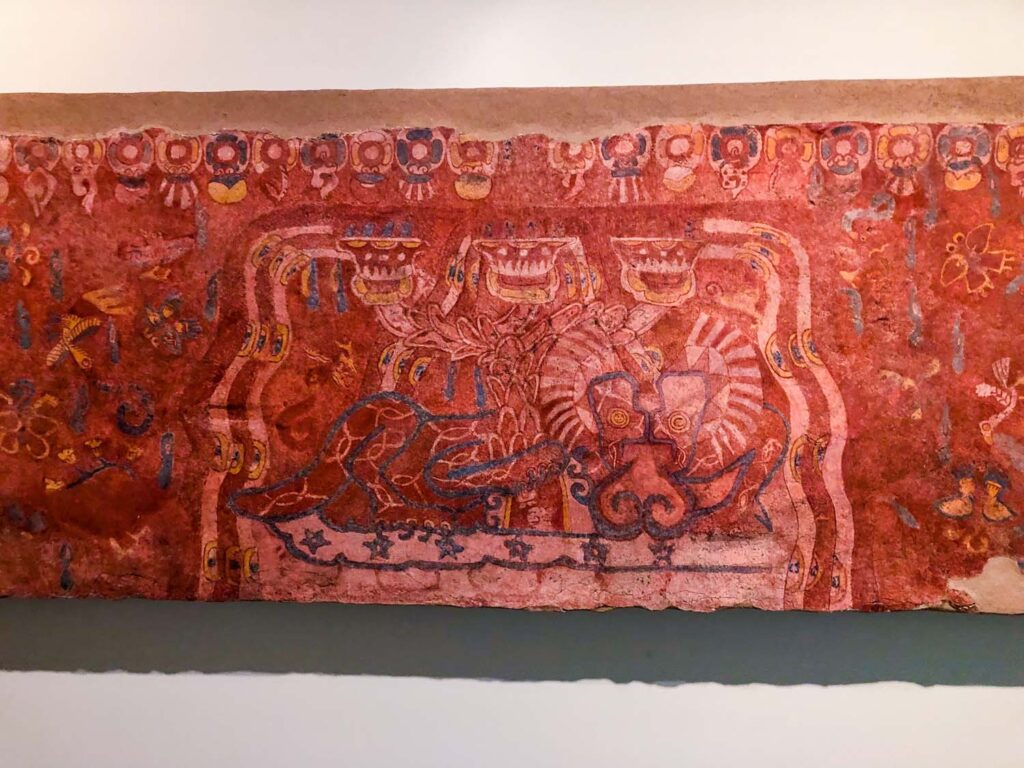
Some murals also show the Teotihuacán people playing ball games, almost like soccer or baseball, that we know today! This kind of scene breaks the division of time between this ancient civilization and how we live today.
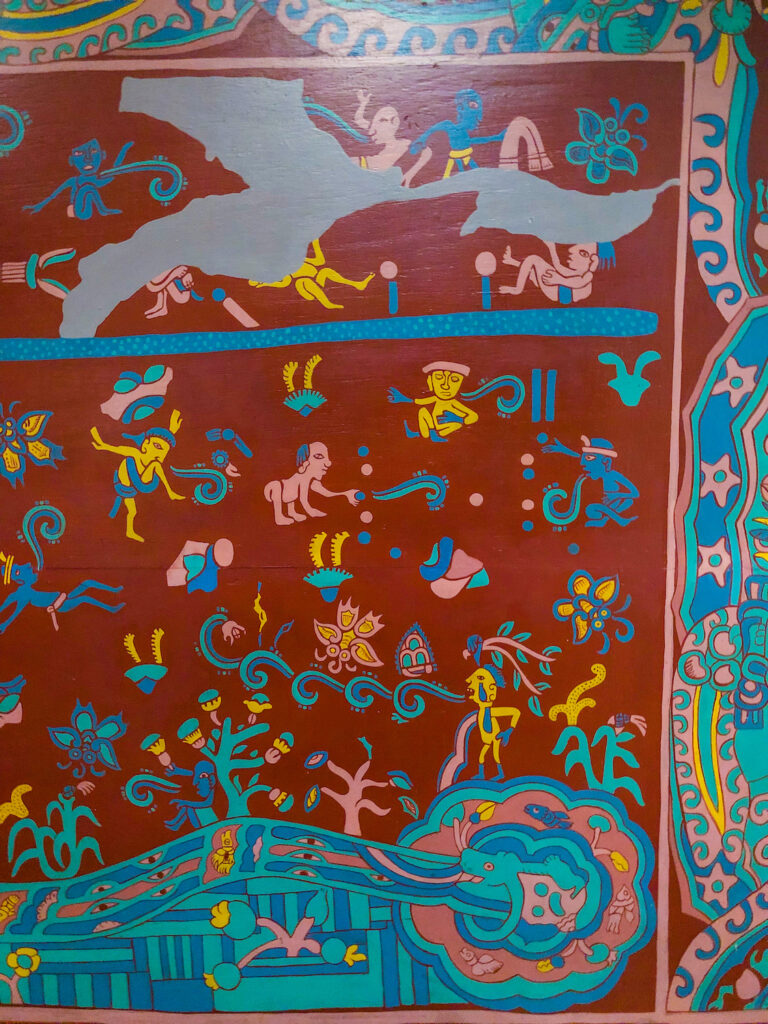
Tepantitla
Various murals come from a compound in Tepantitla. The murals from this wonderfully preserved space give us a look inside the daily lives of the Teotihuacán people. You can see Teotihuacános hunting butterflies, farmers sowing seeds and priests performing rituals. These priests wear headdresses with the faces of owls or crocodiles to pay homage to their respective gods.
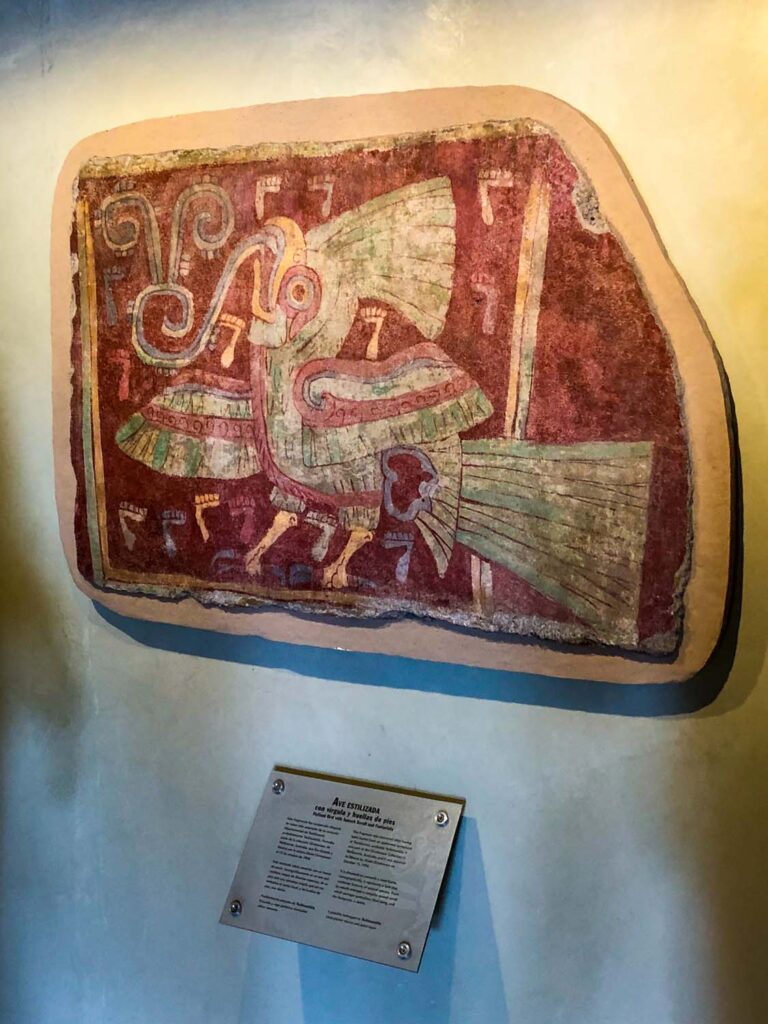
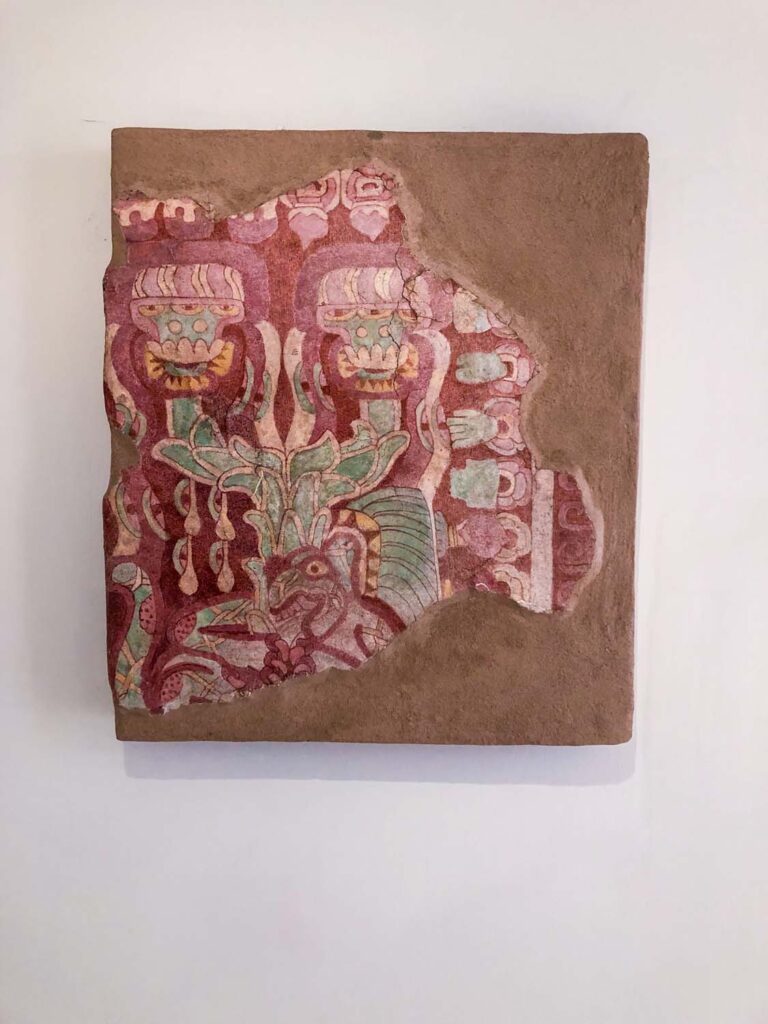
The museum also features a fantastical recreation of what the interior paintings inside temple spaces would once have looked like. This gives you an idea of the colours and designs that once would have covered these great pyramids’ entire outside and inside. It brings the rocks to life, and I can’t imagine who utter awe one would have experienced hundreds of years ago, walking into this city for the first time.
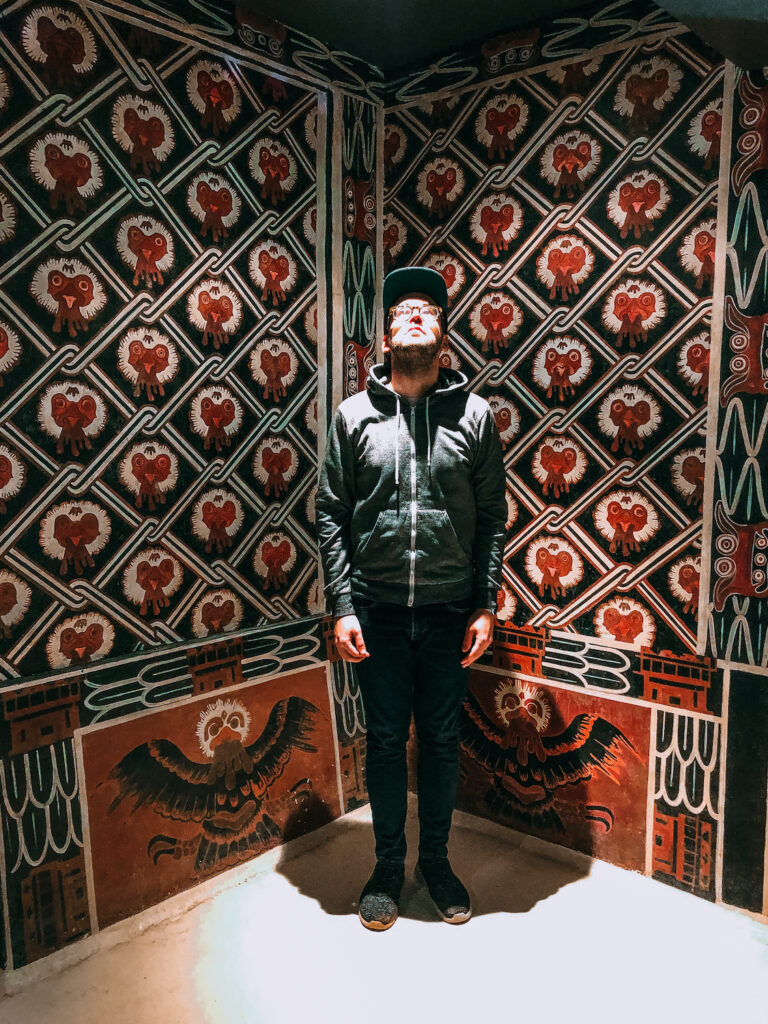
This brings us to the end of the guided tour. Teotihuacán is truly one of the most spectacular ancient sites of the old world. I remember the first time I visited the ancient ruins of Rome, I felt a little disappointed. Stuck in the middle of a bustling modern city, they felt out of place. Or at least didn’t imbue the kind of reverence I had expected from these time-worn relics. But Teotihuacán was different. Walking down the avenue of the dead, you feel like an explorer coming across the discovery of a lifetime. You can feel the sacred nature of the stones and see the grandeur of the city which once was. I definitely think whatever way you can make your way here, don’t miss seeing this amazing piece of history!
Have you been to Teotihuacán before? Or is there another ancient ruin you loved exploring for the first time? Let me know in the comments!
Happy Travels Adventurers!
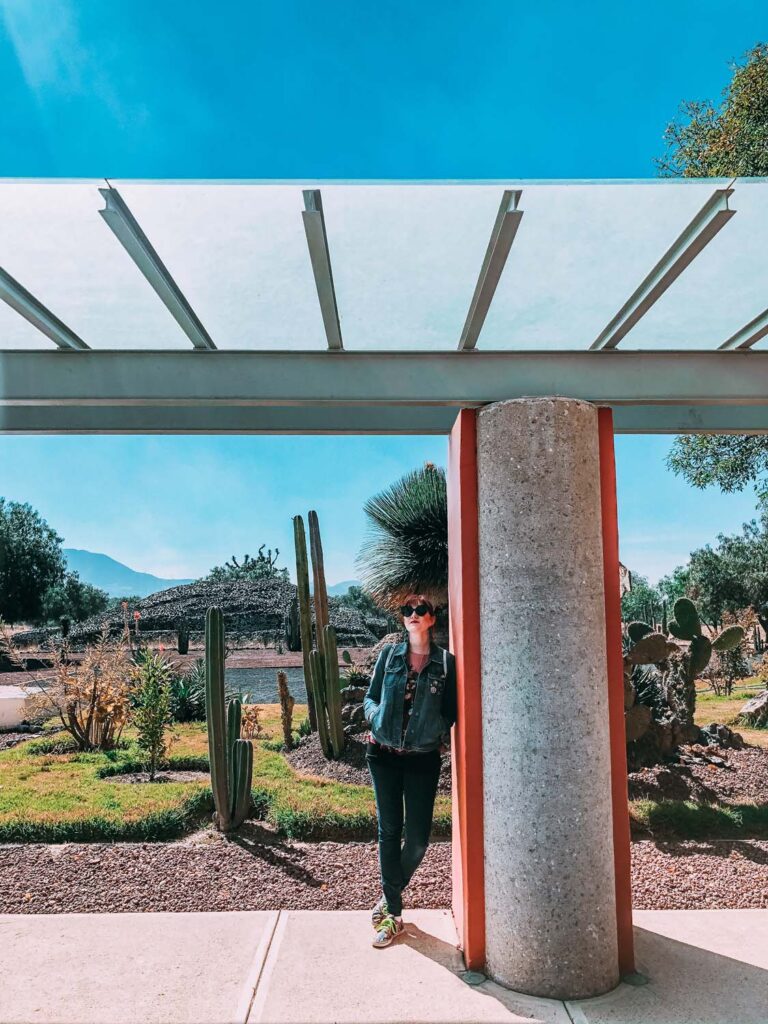
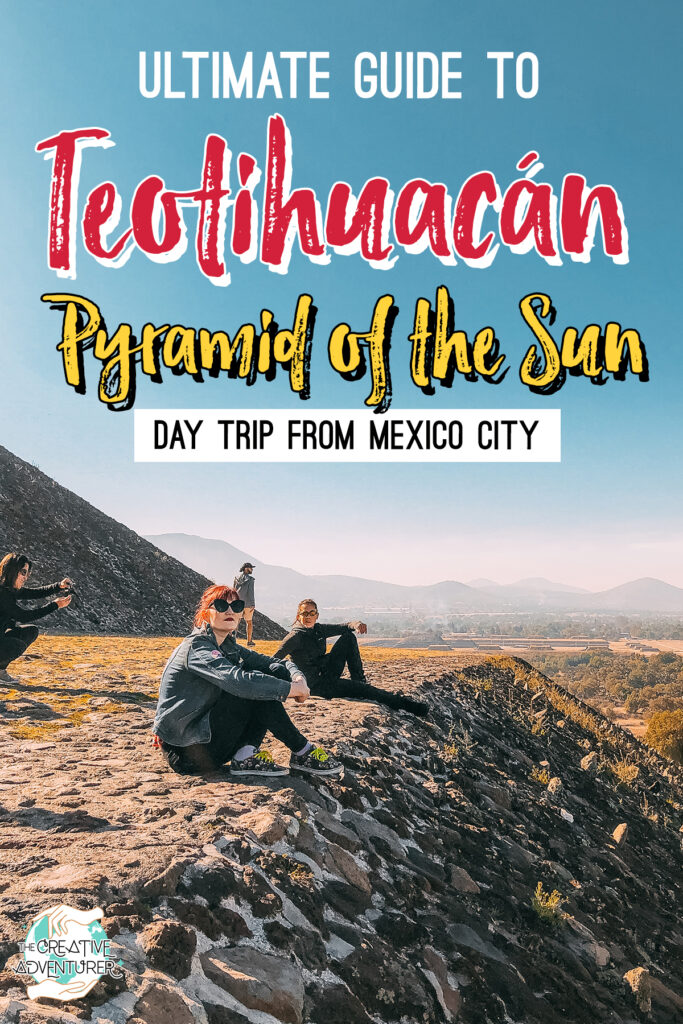
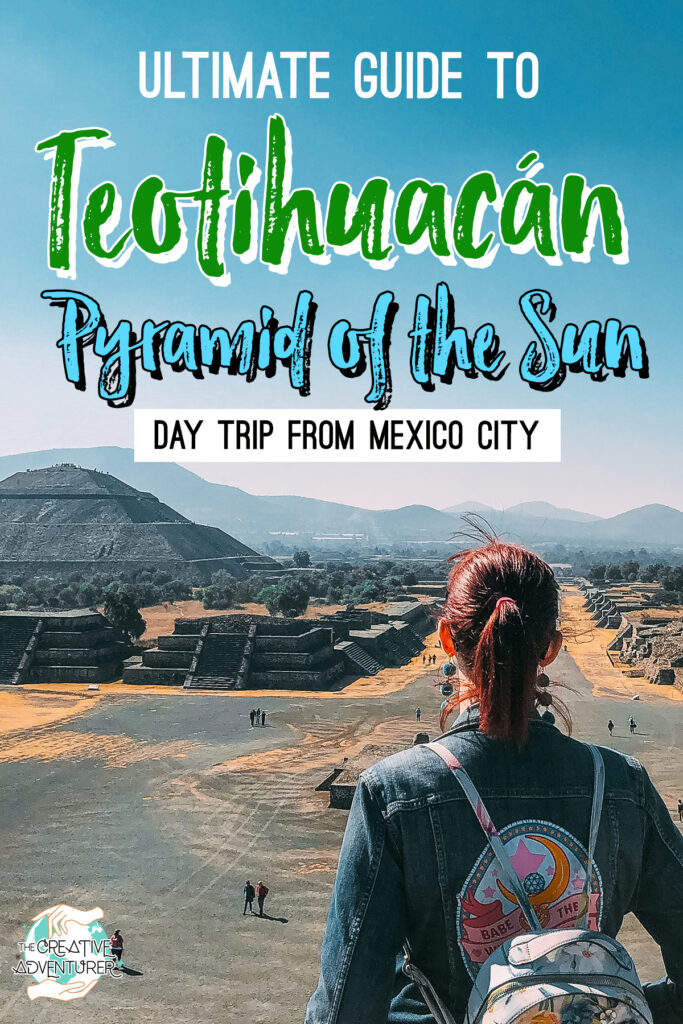
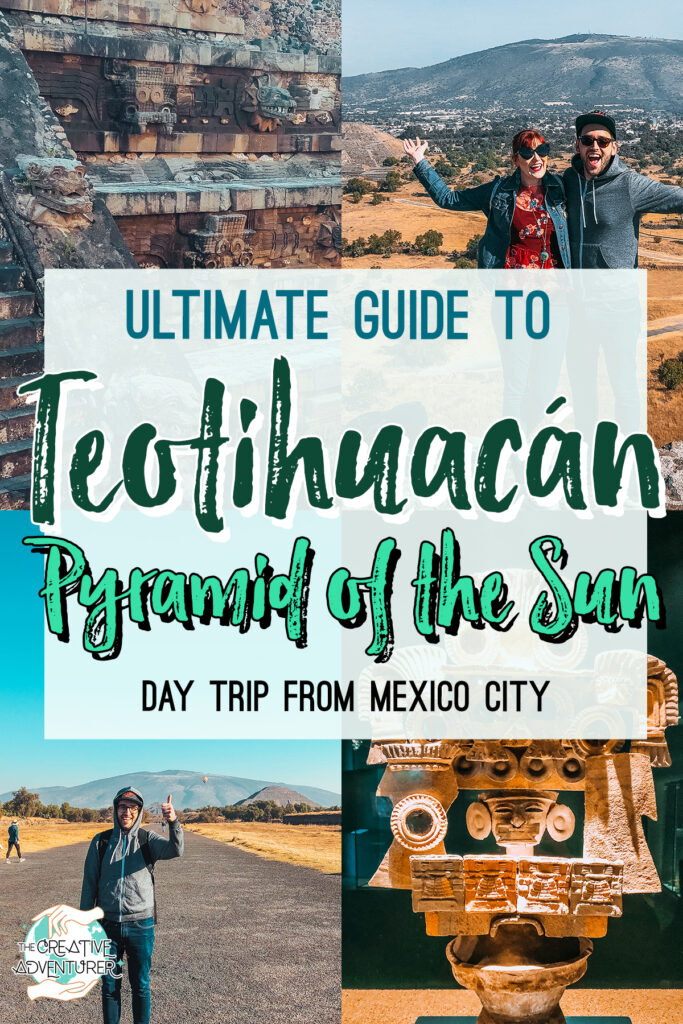


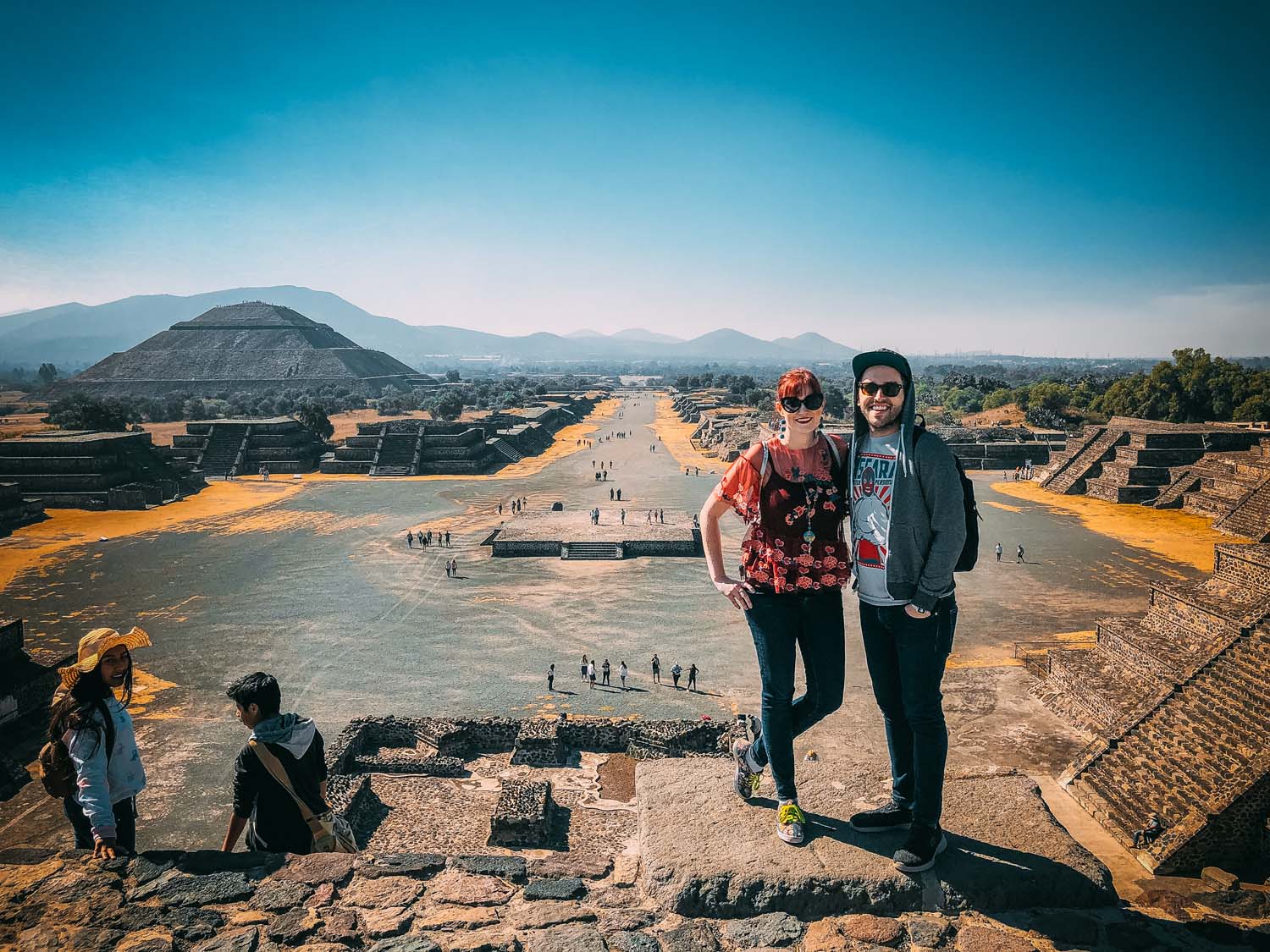
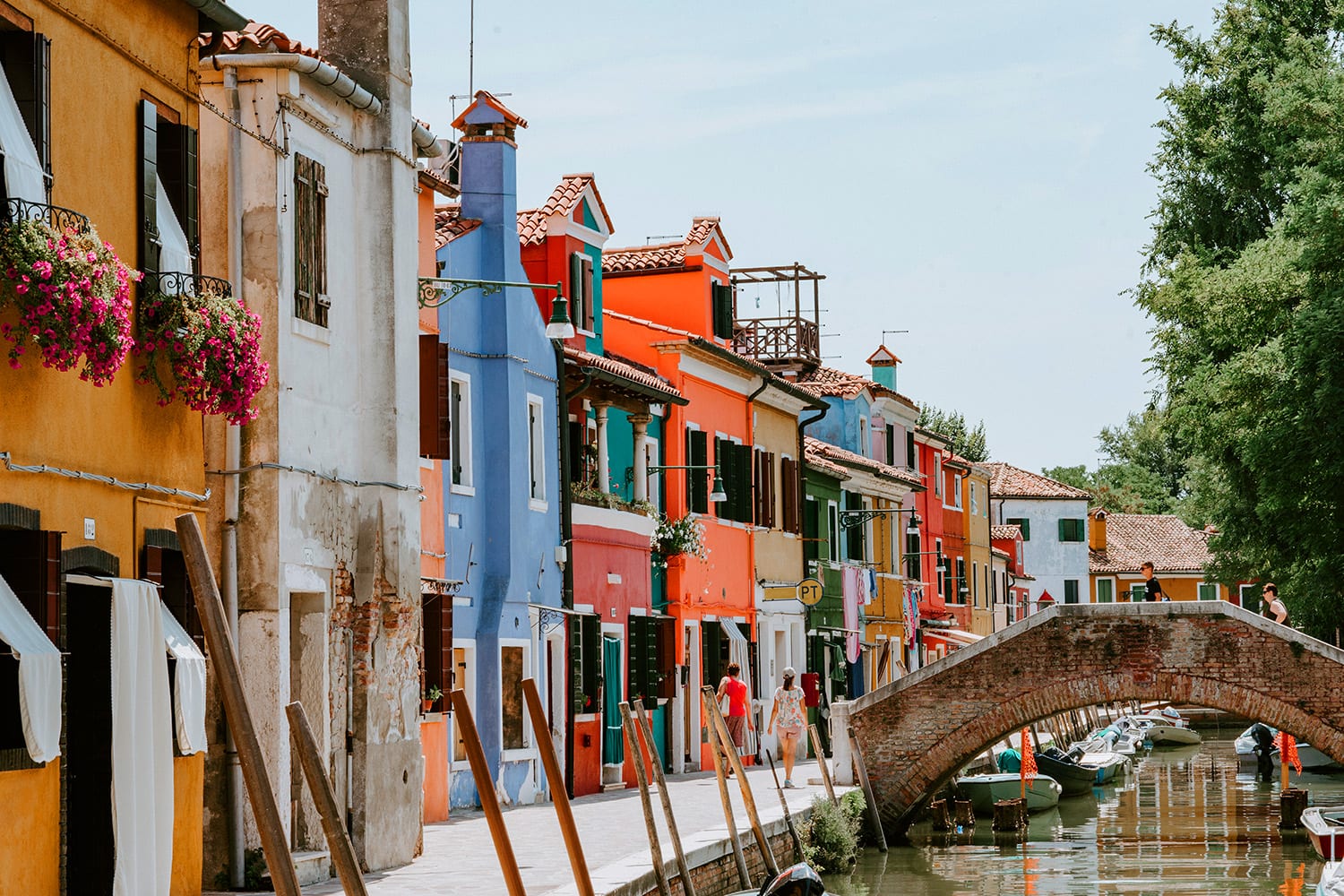
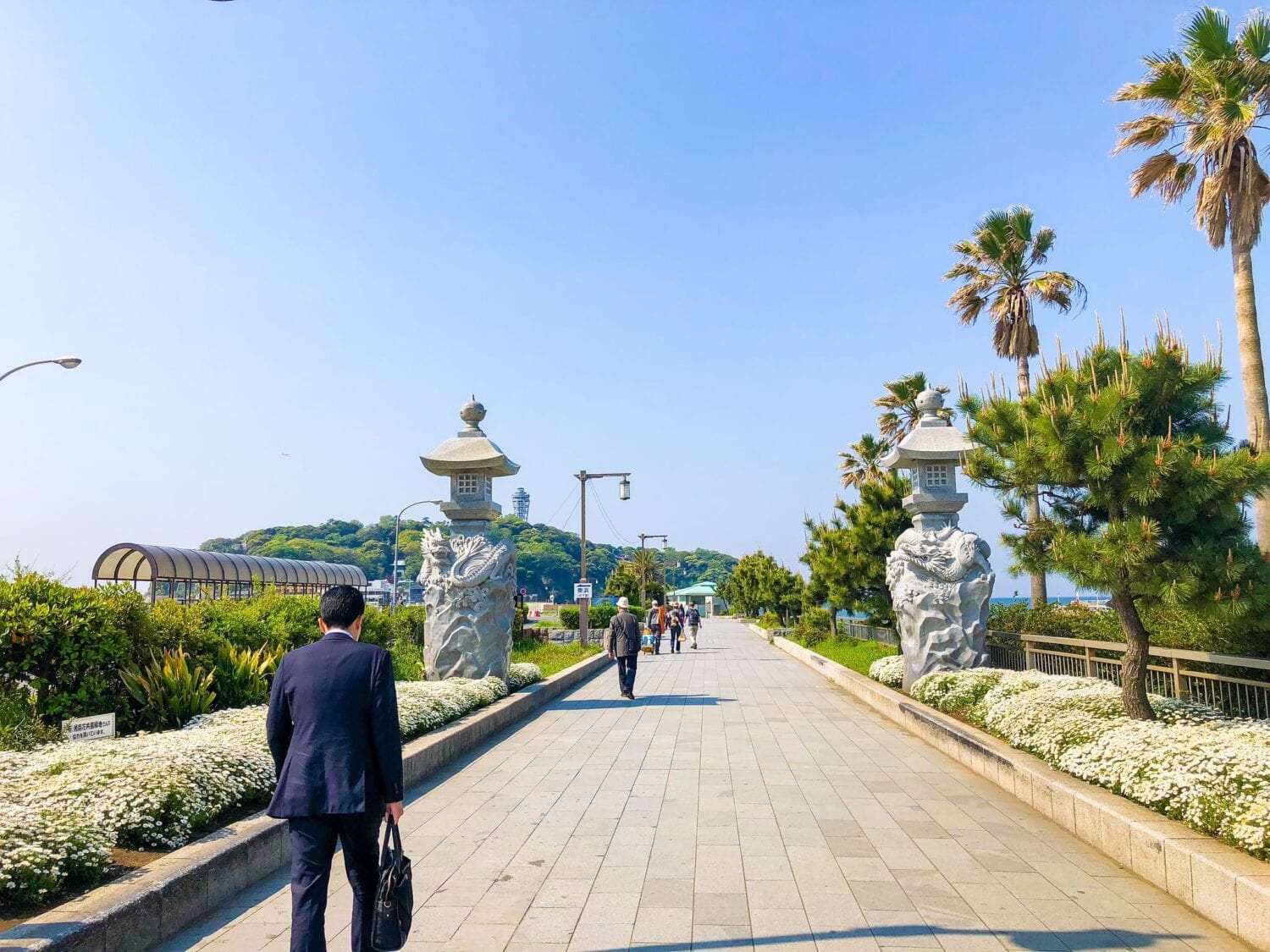
2 COMMENTS
Tamila
1 year agoThank you for this guide, it made visiting this site so much easier! One correction though – you can no longer climb Pyramid of the Sun or Pyramid of the Moon. The only one you can still go to the top of is the Feathered Serpent Pyramid.
The Creative Adventurer
1 year ago AUTHORThanks so much for the update Tamila. Apparently they closed it down during Covid and now they are keeping it closed to preserve it for generations to come. I’ve gone ahead and updated the post to reflect this. Always appreciate these updates from my explorers.